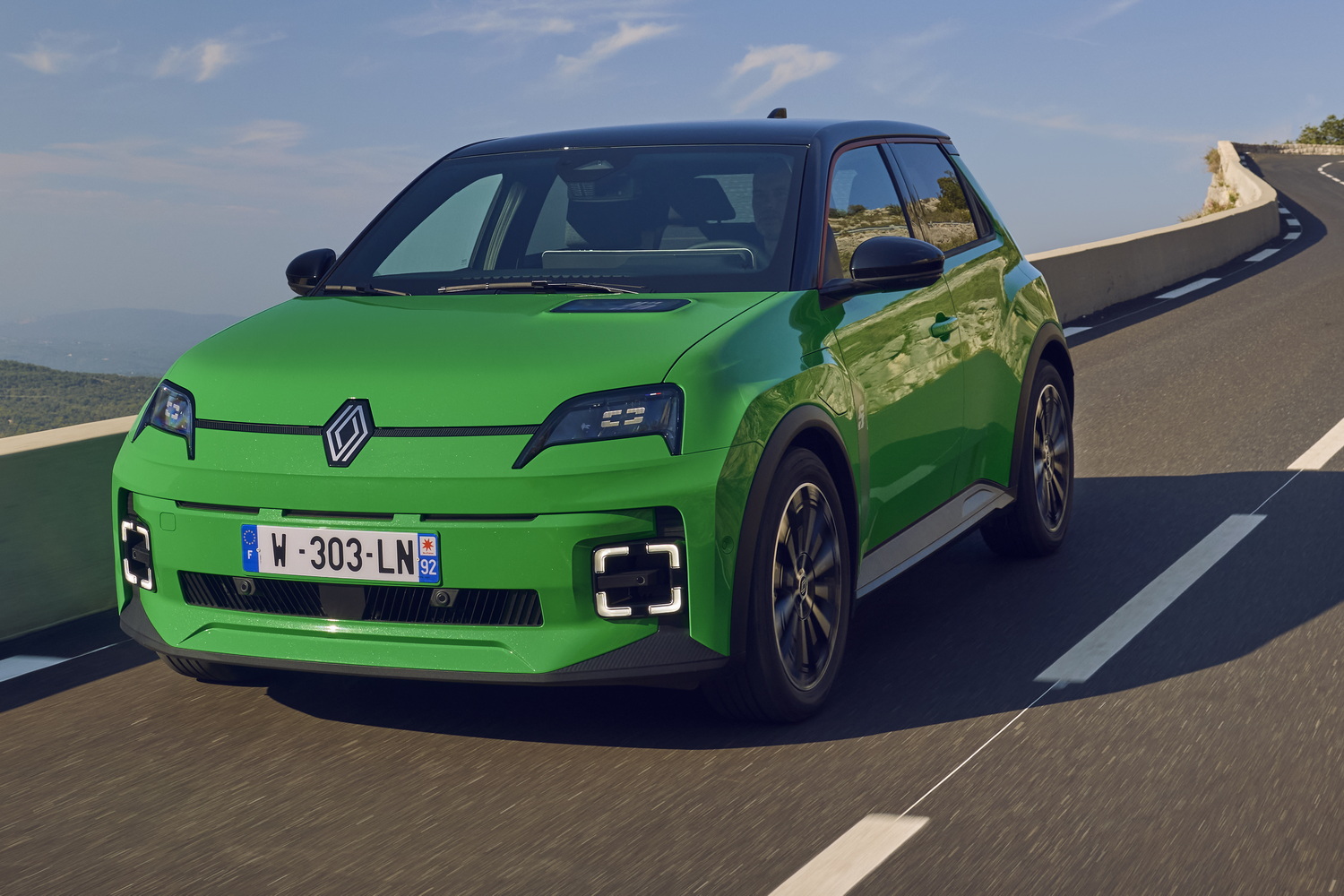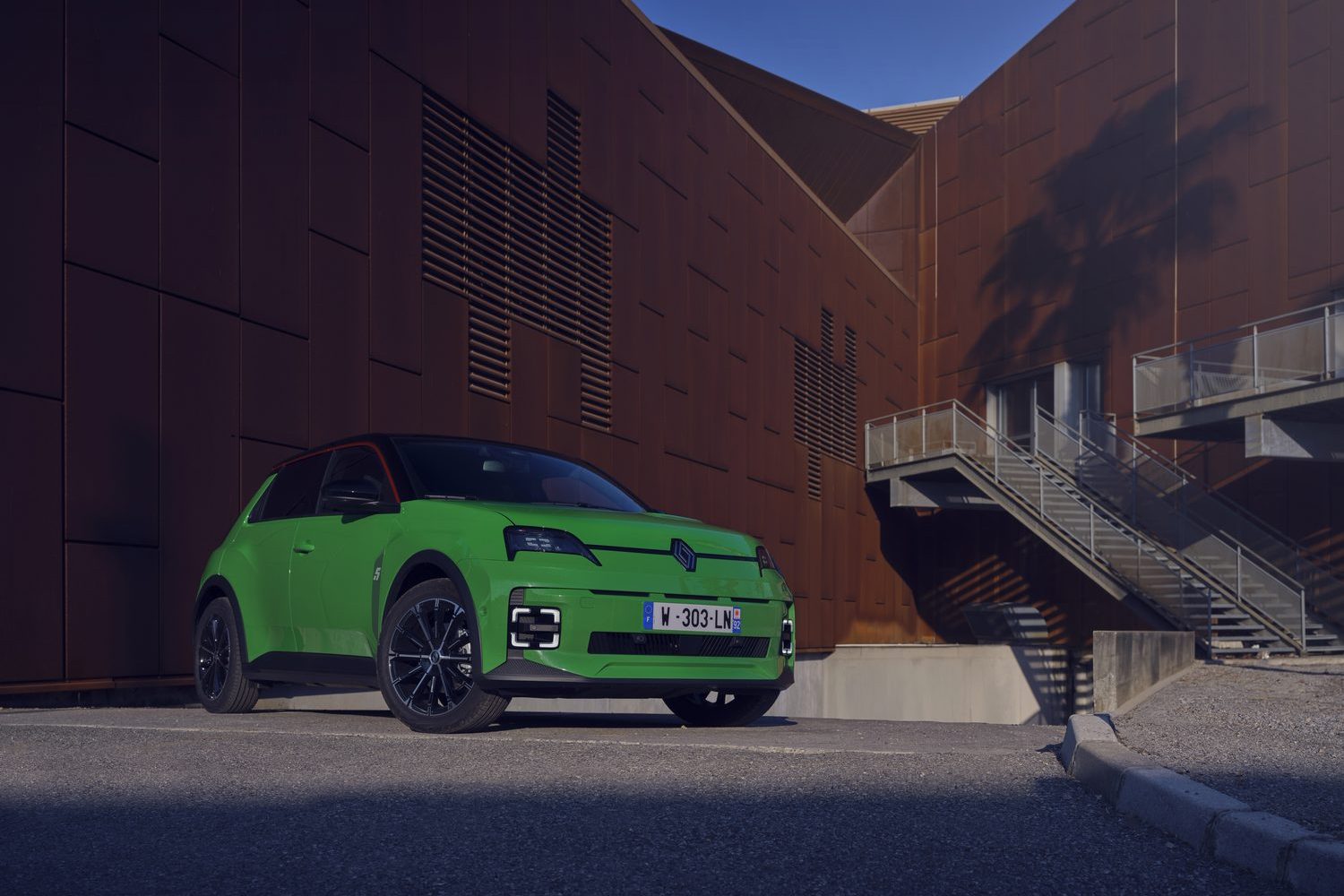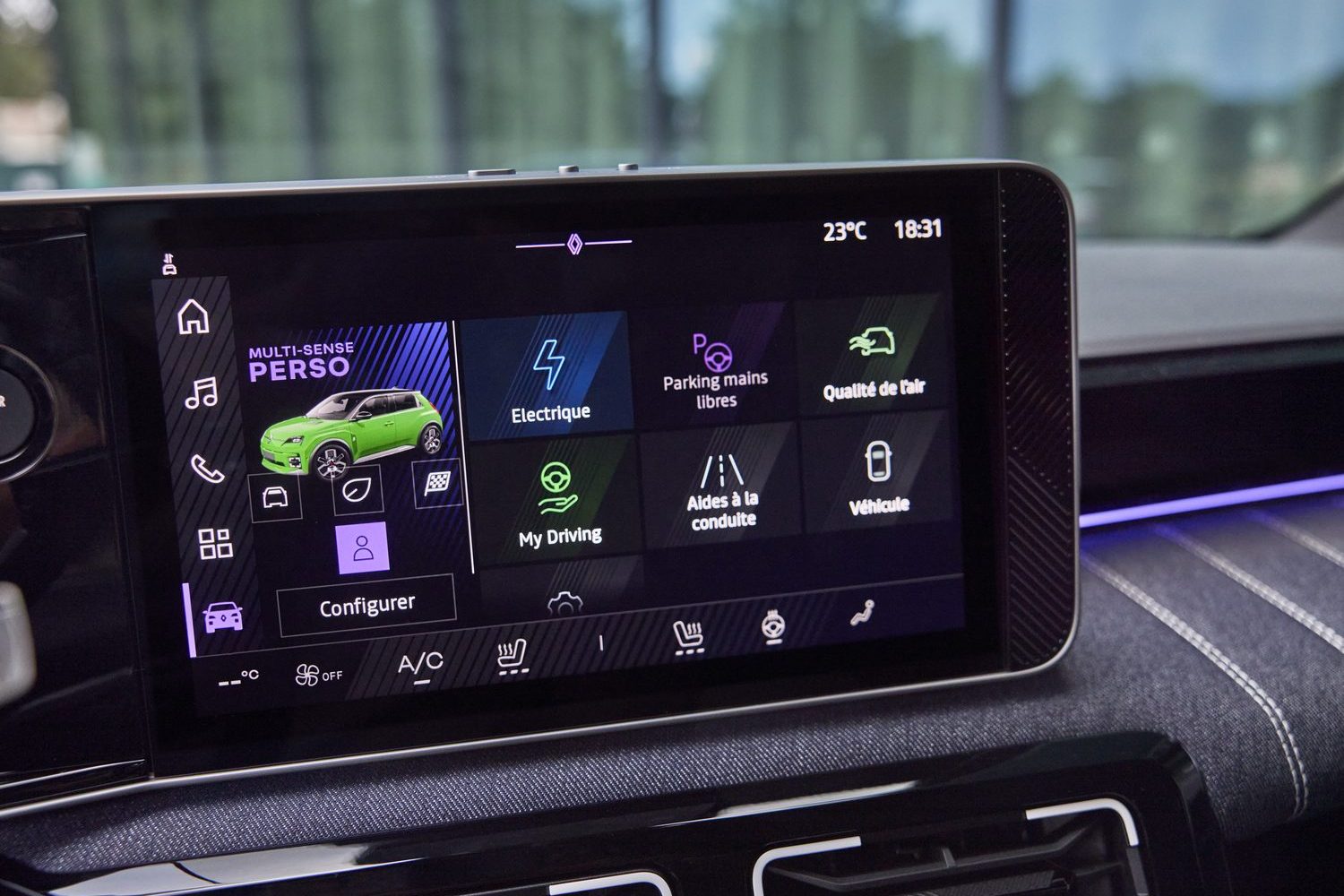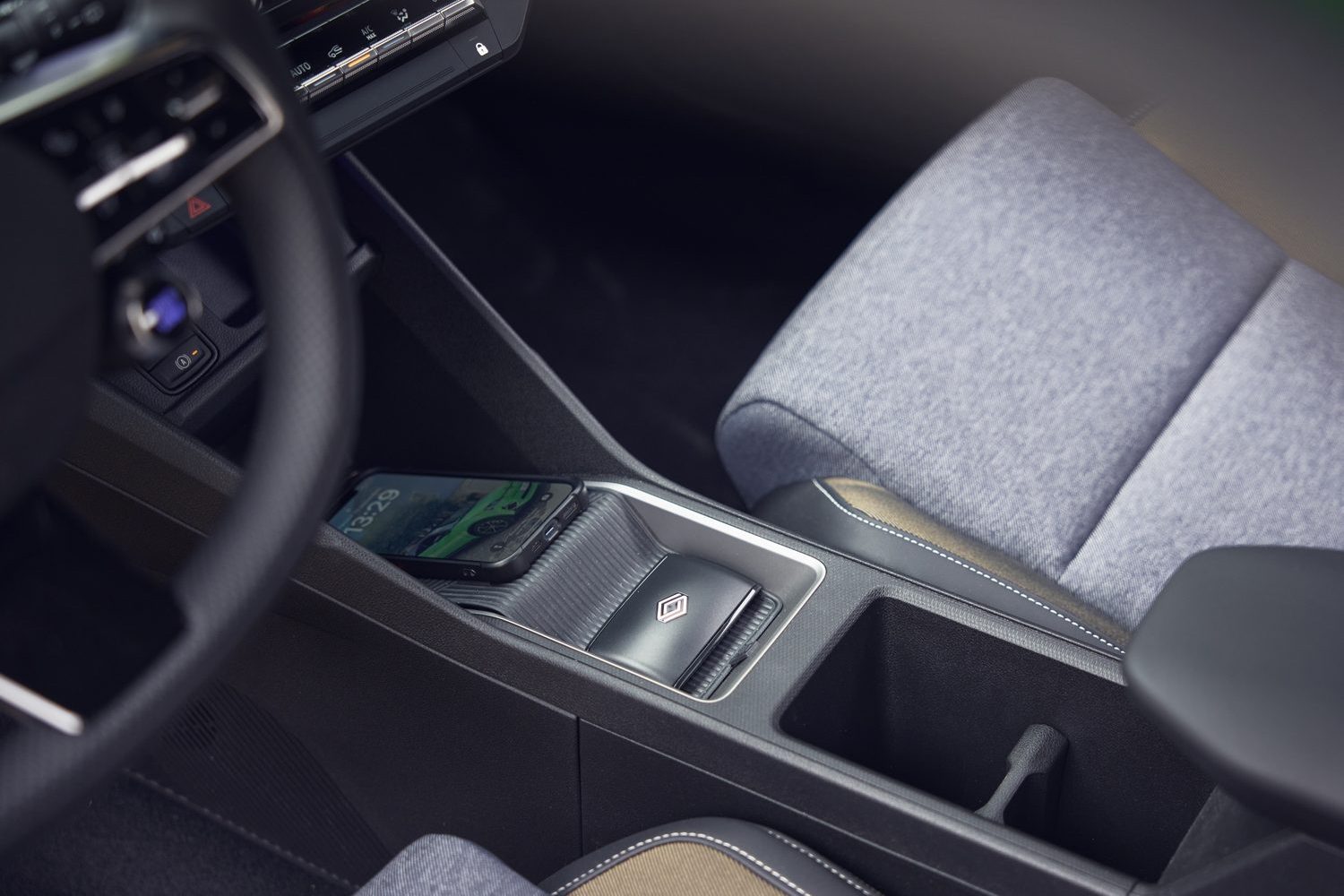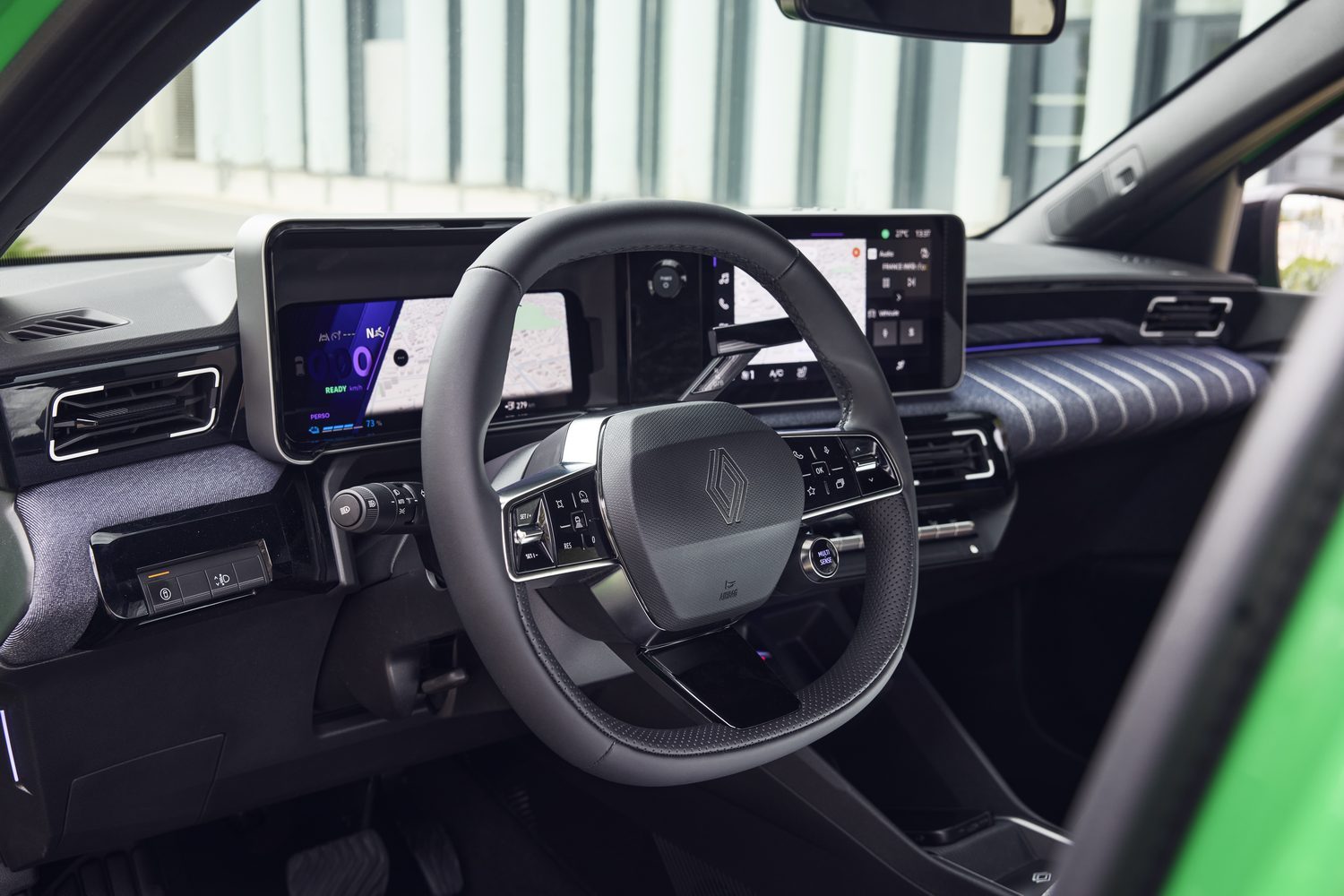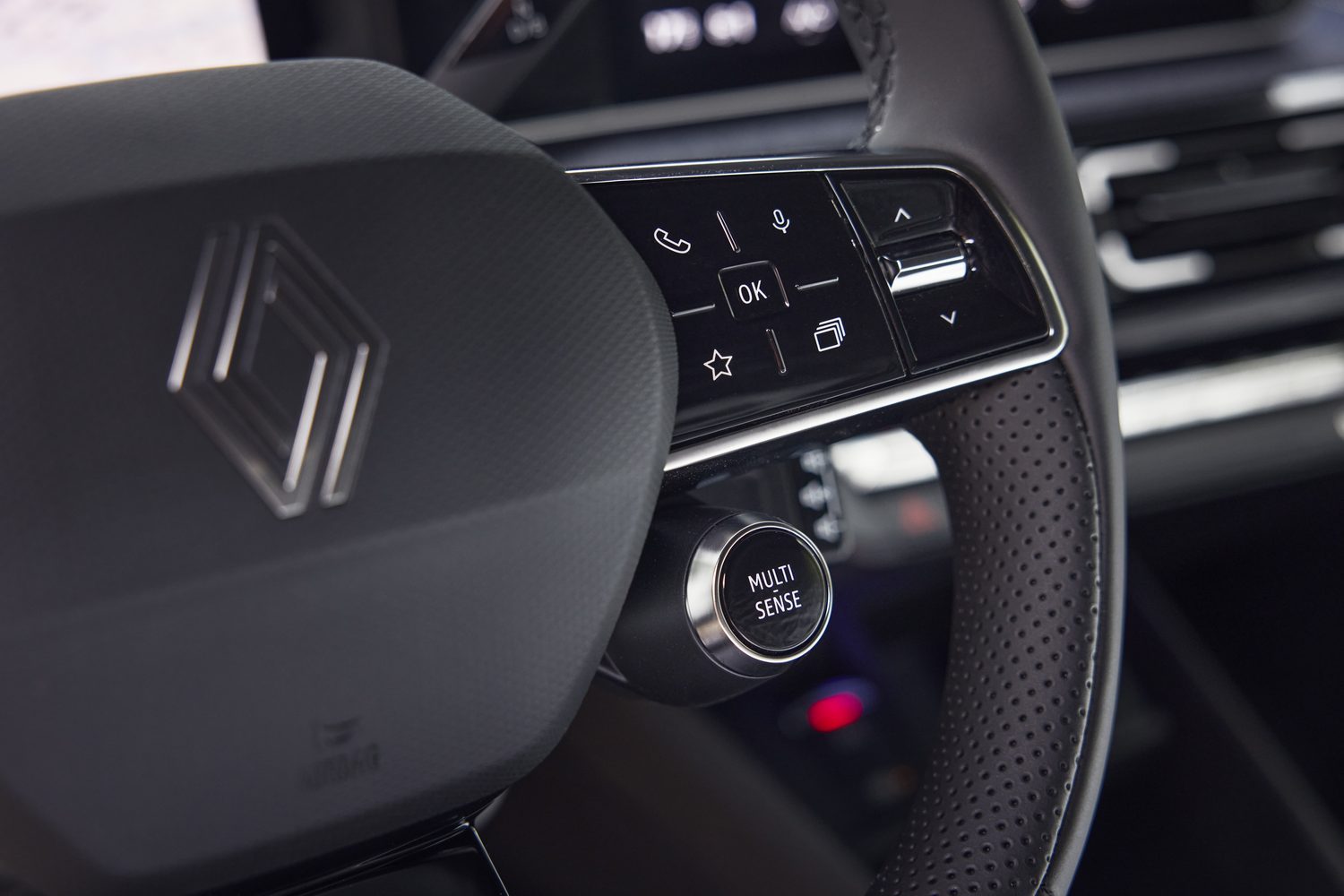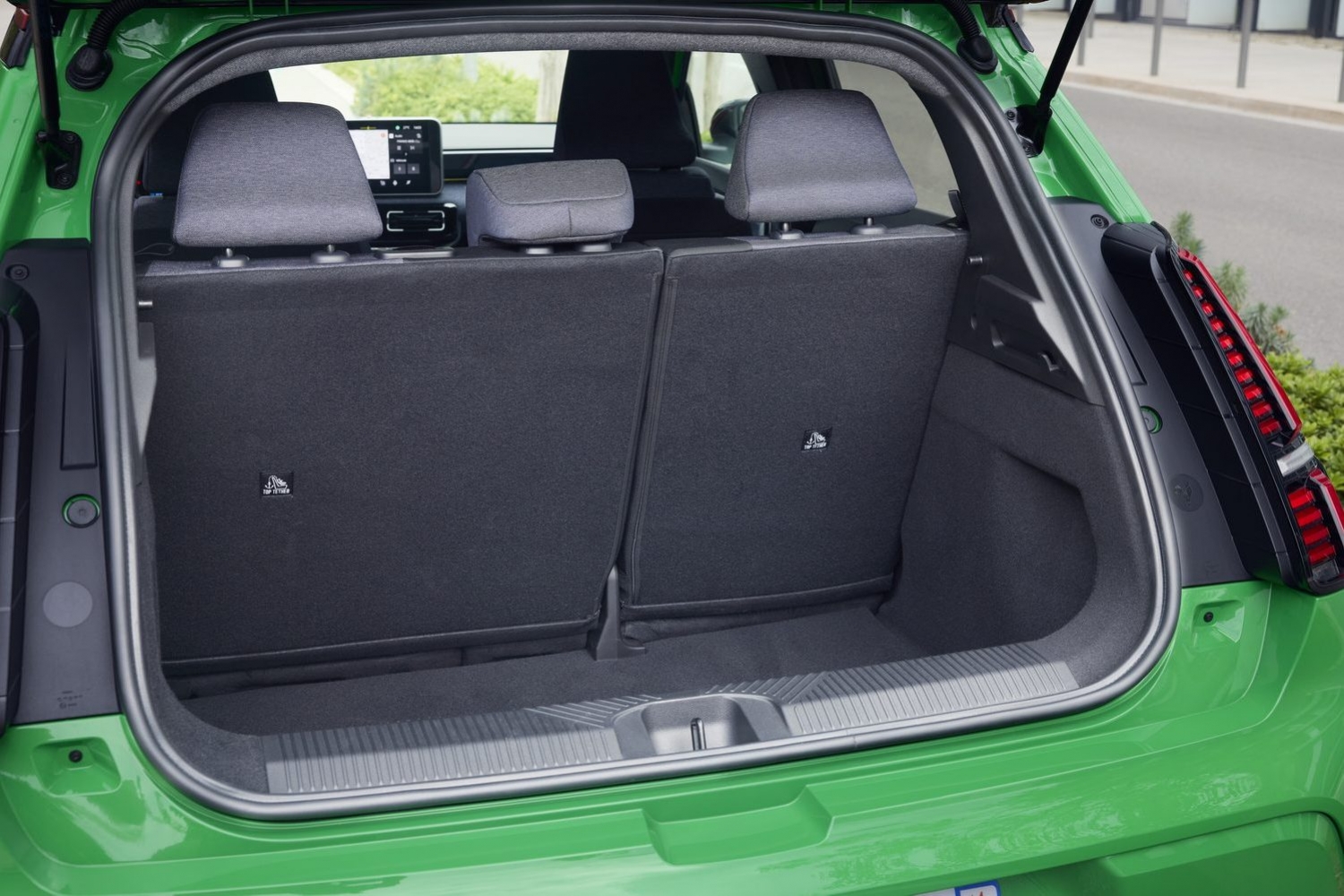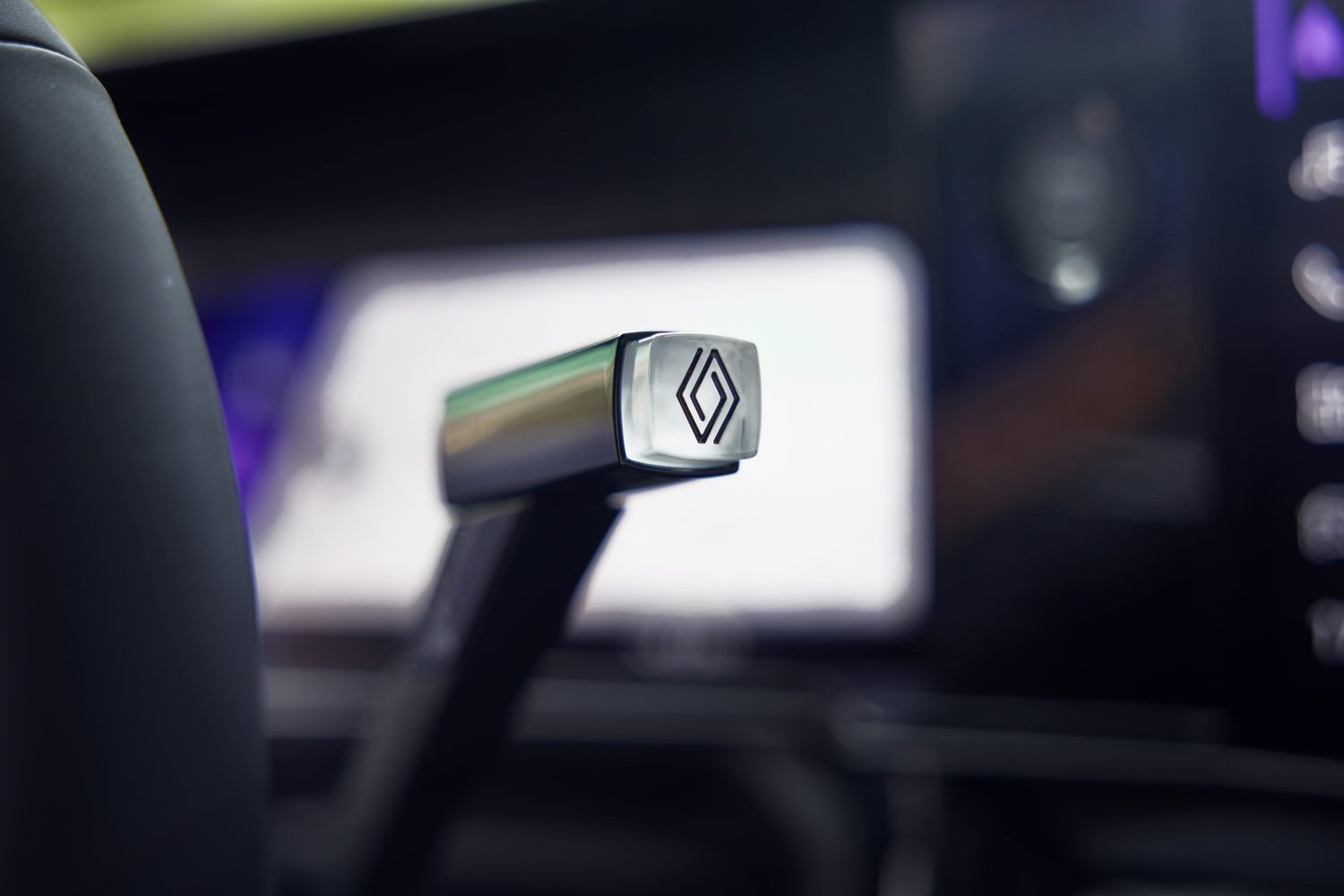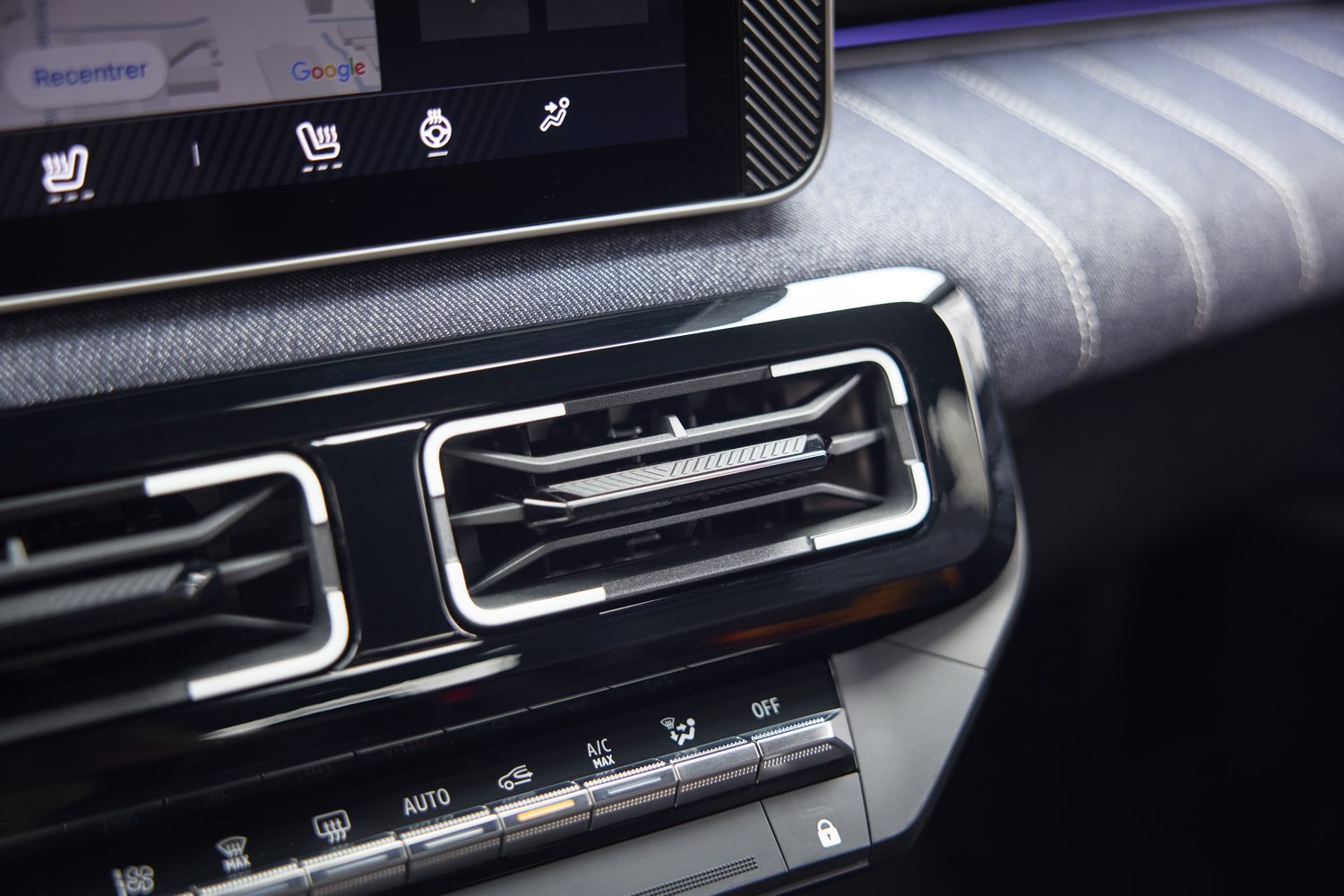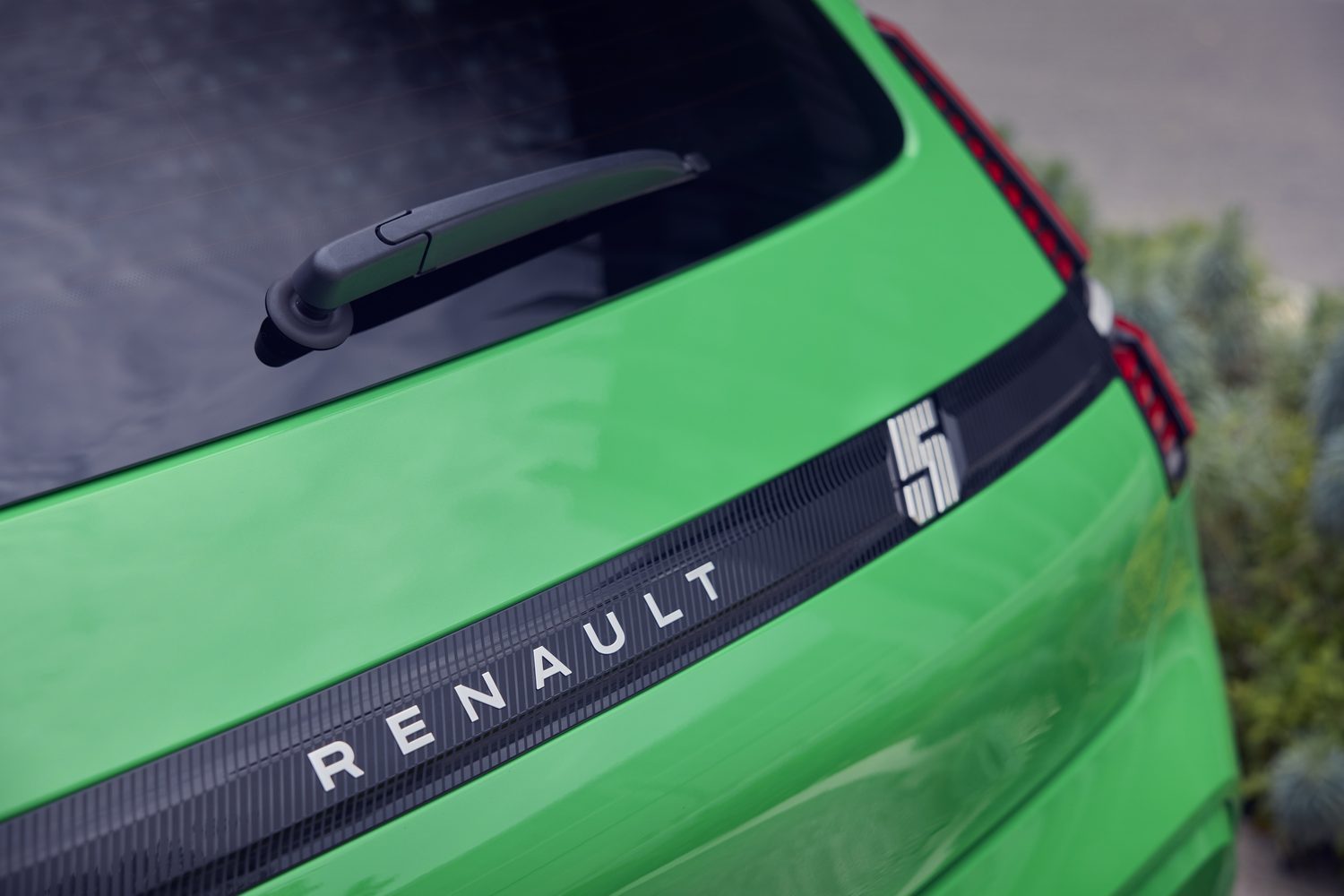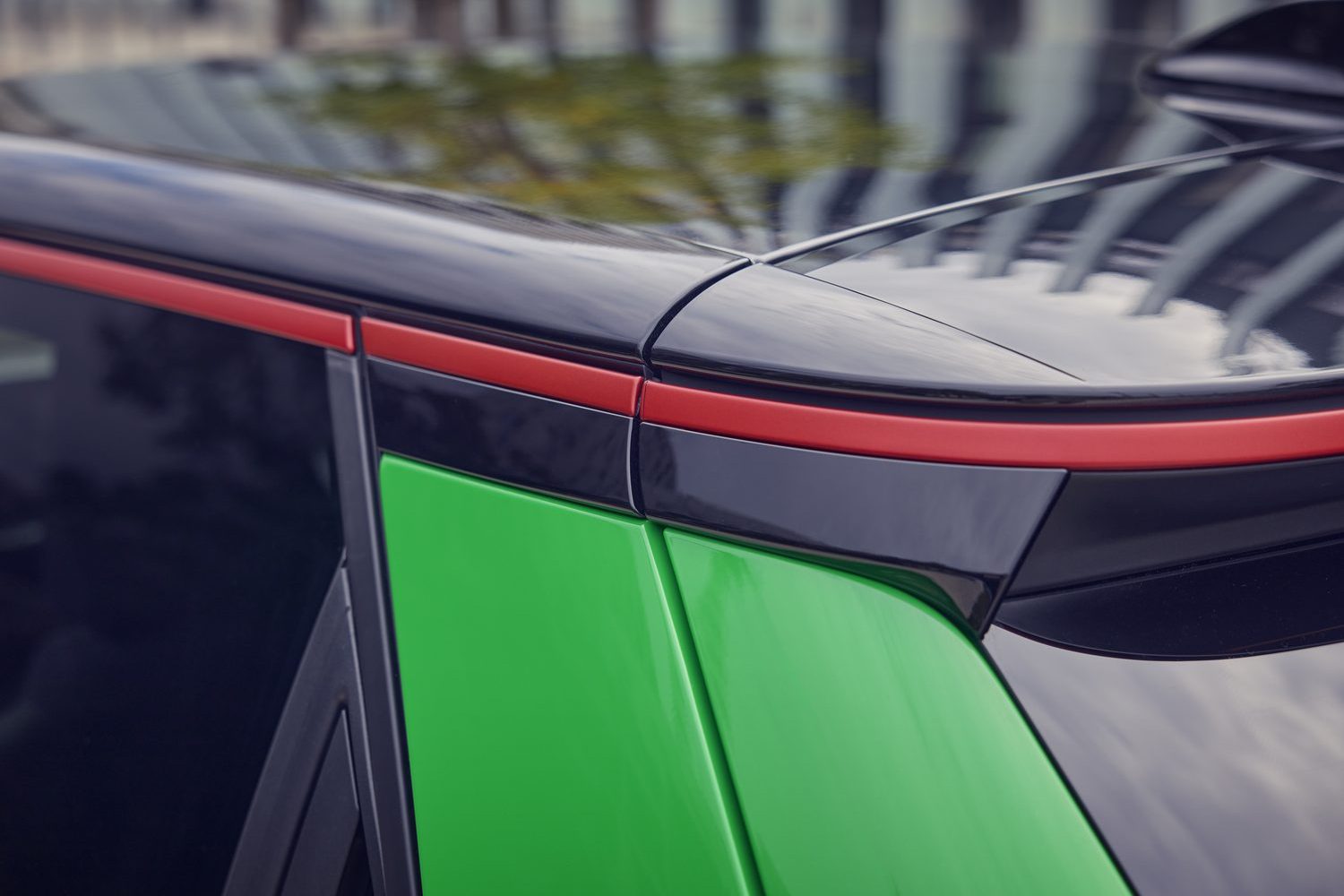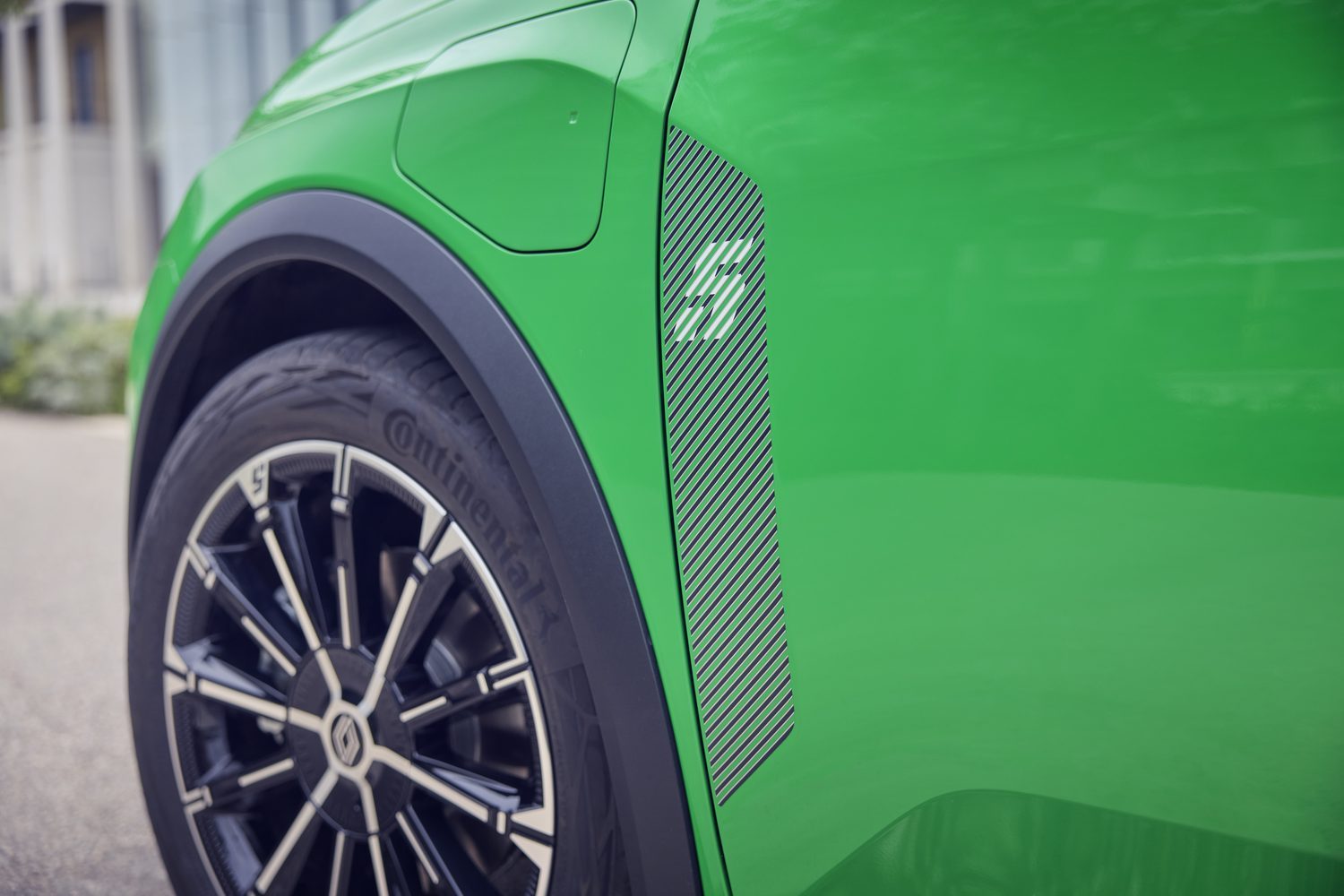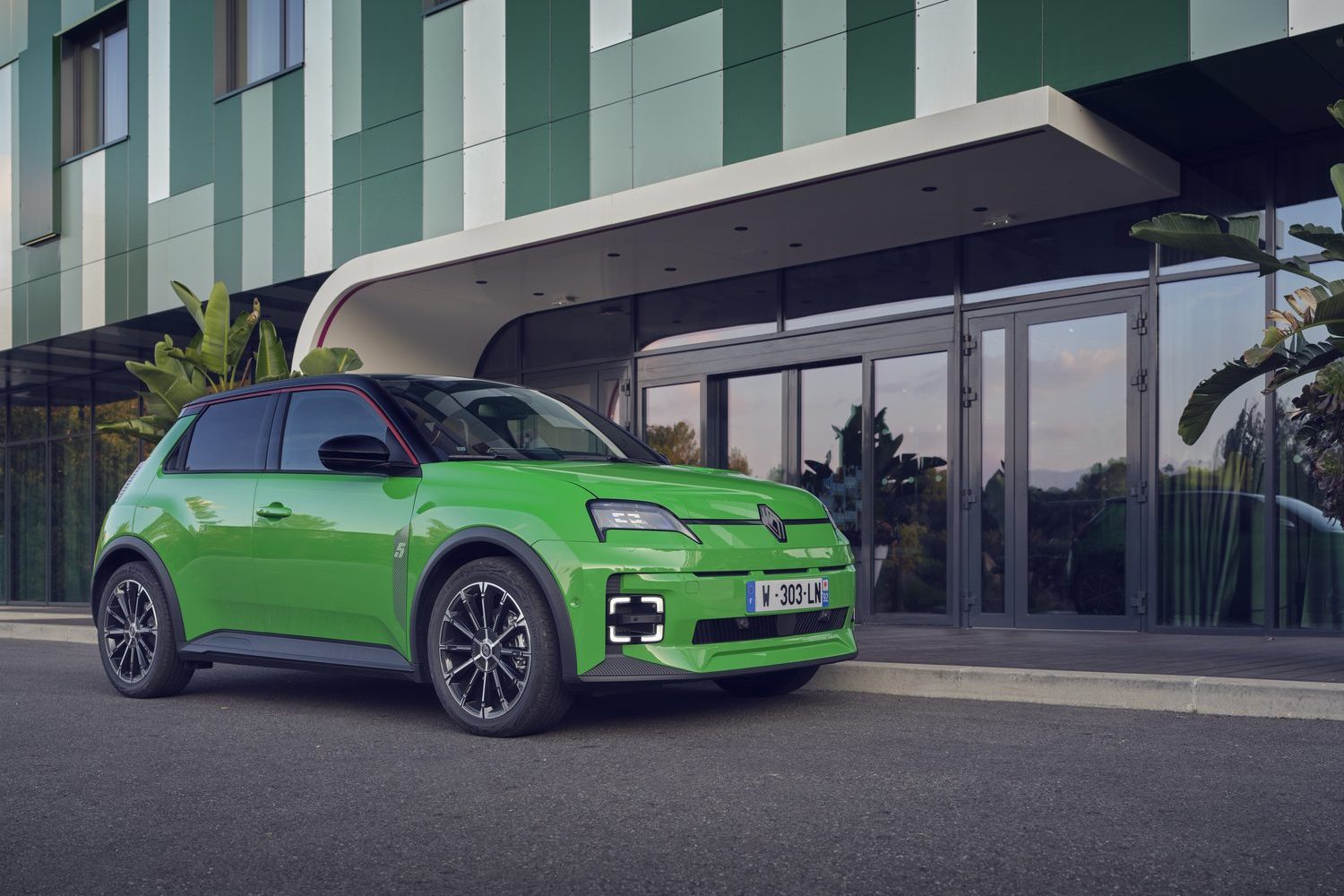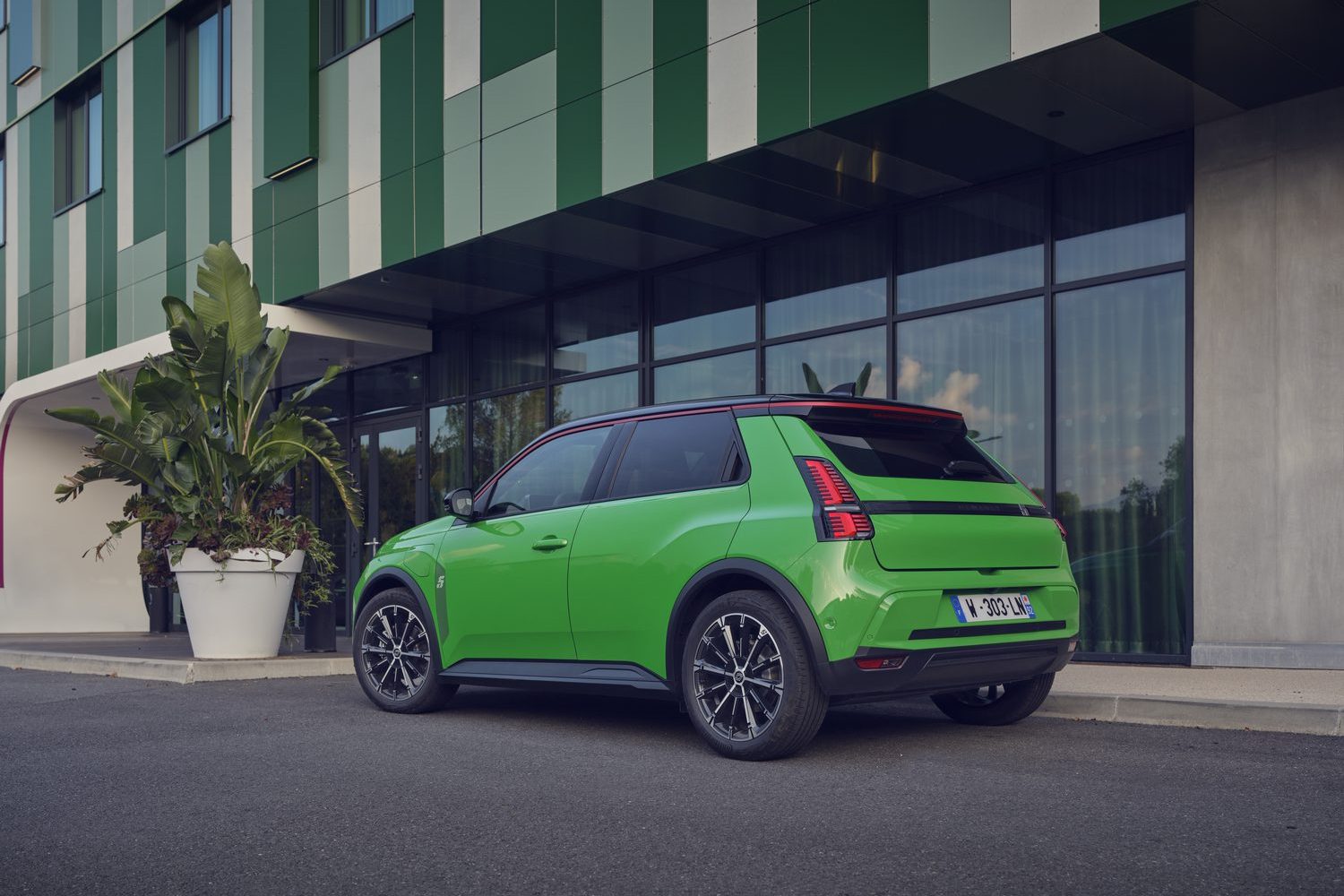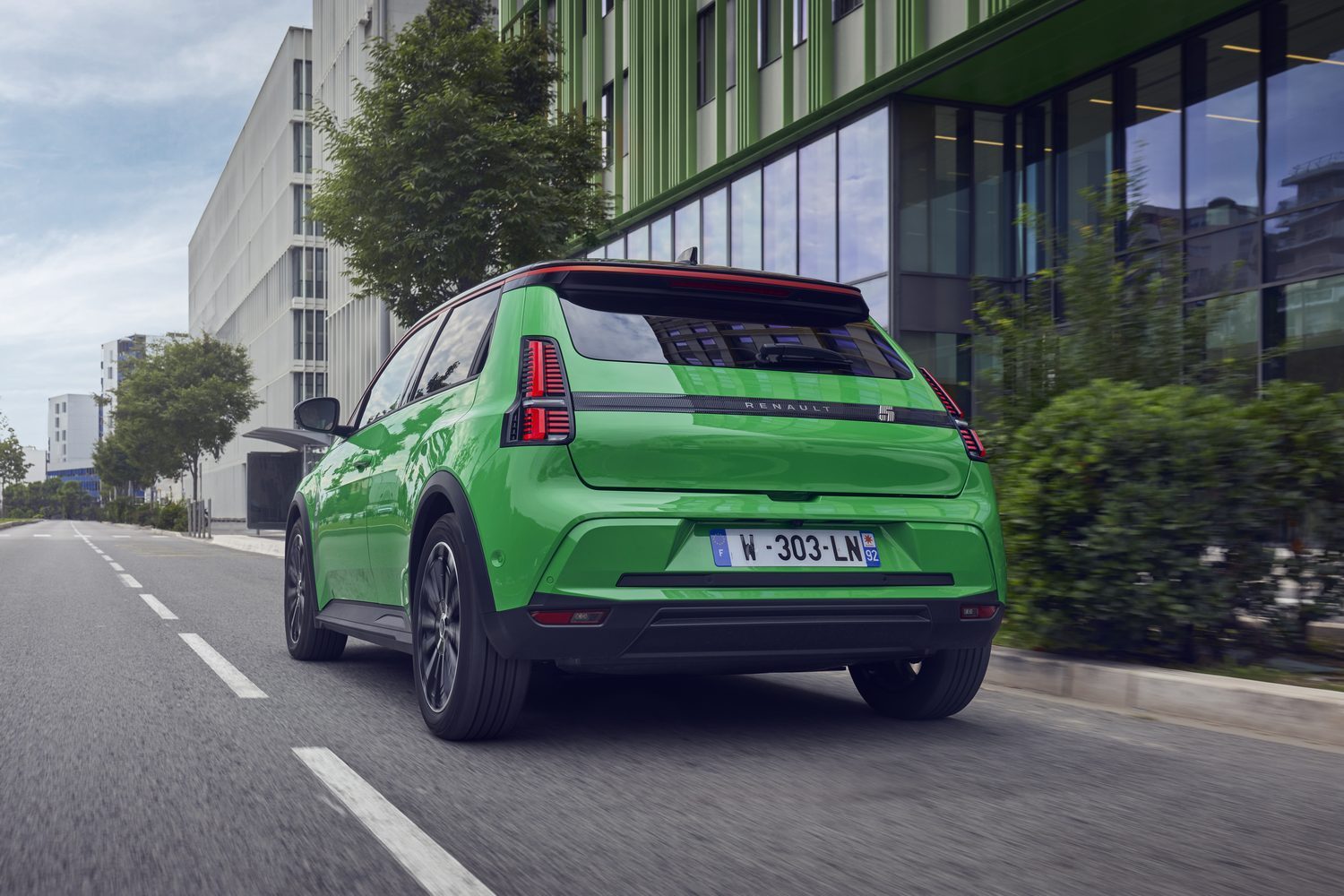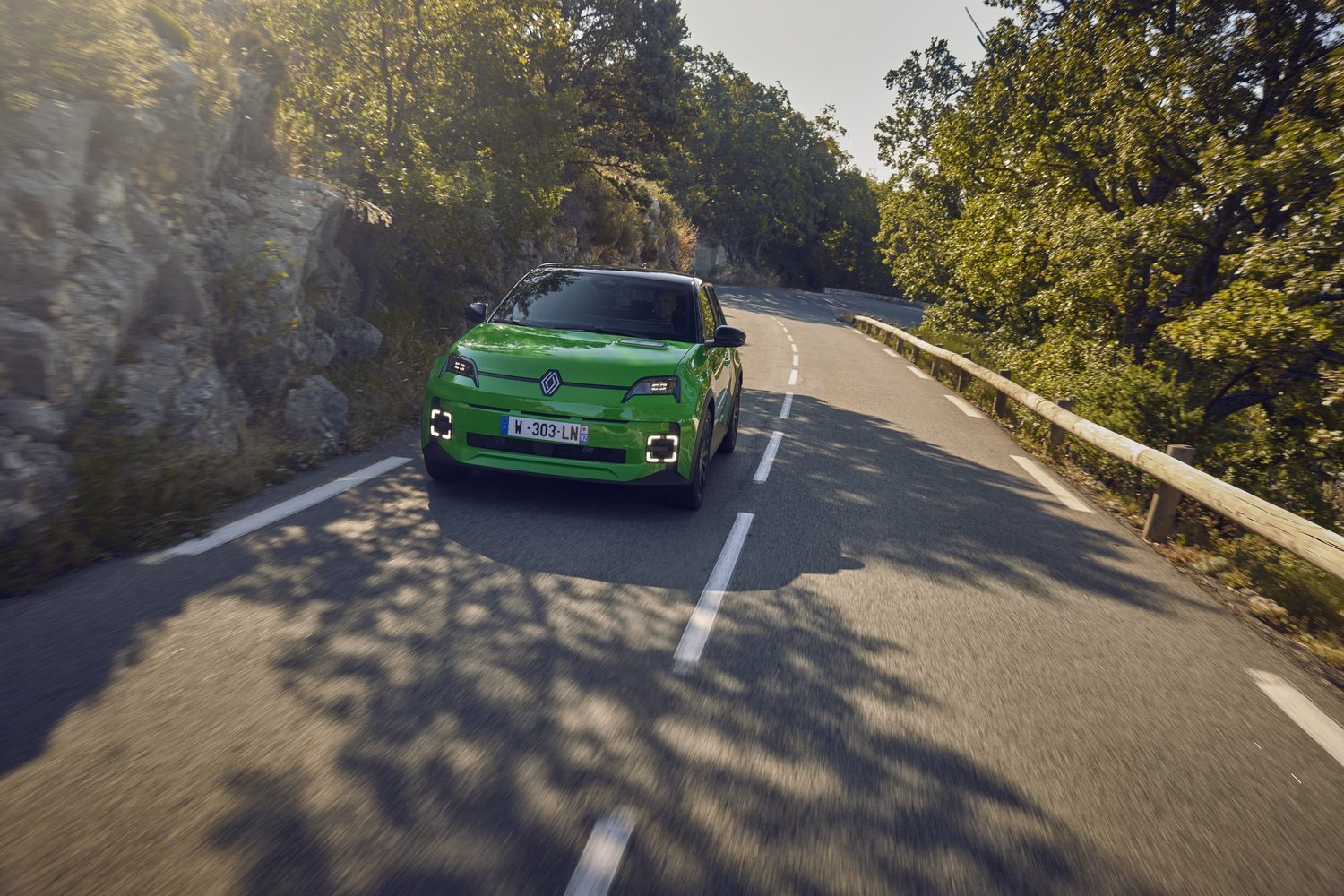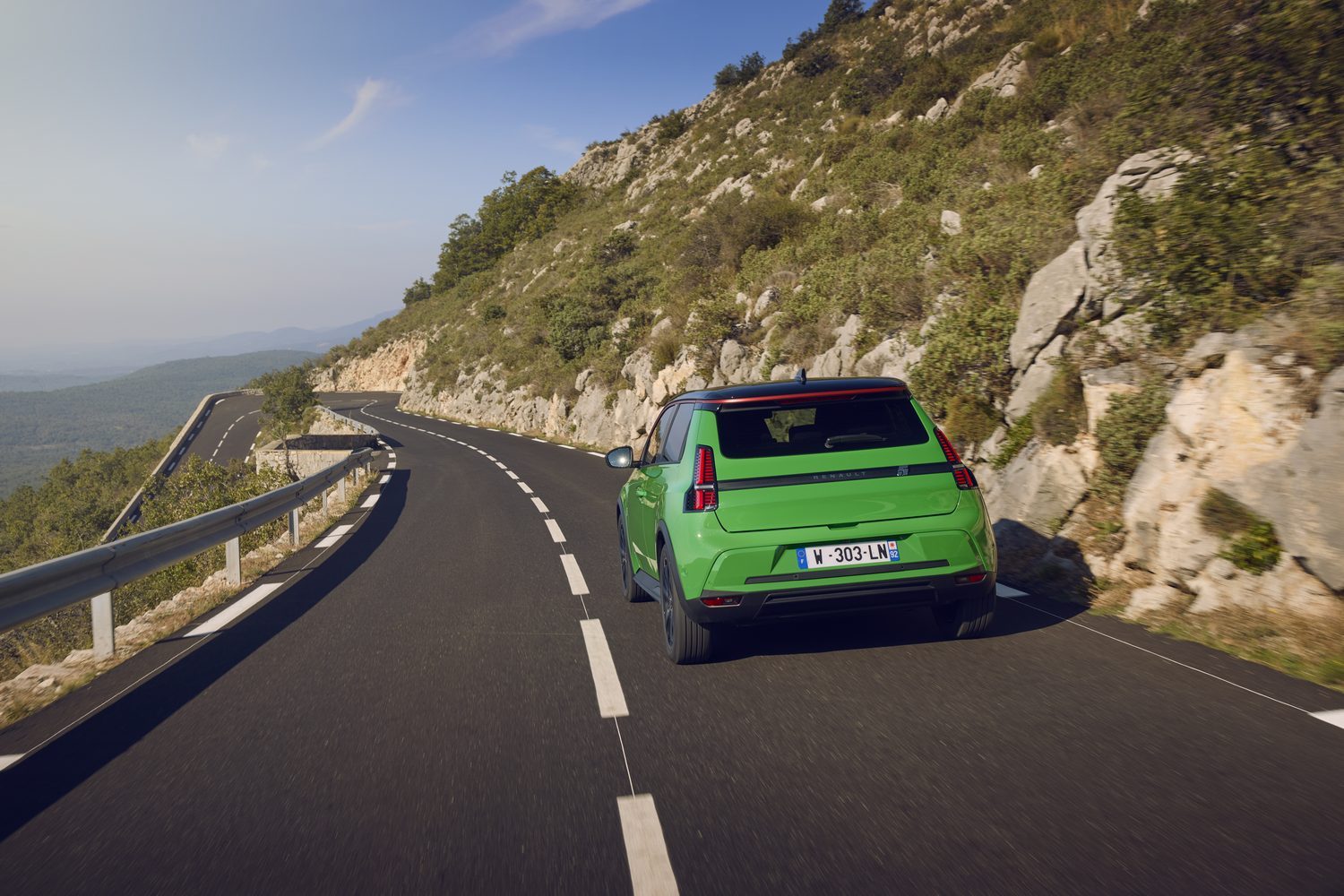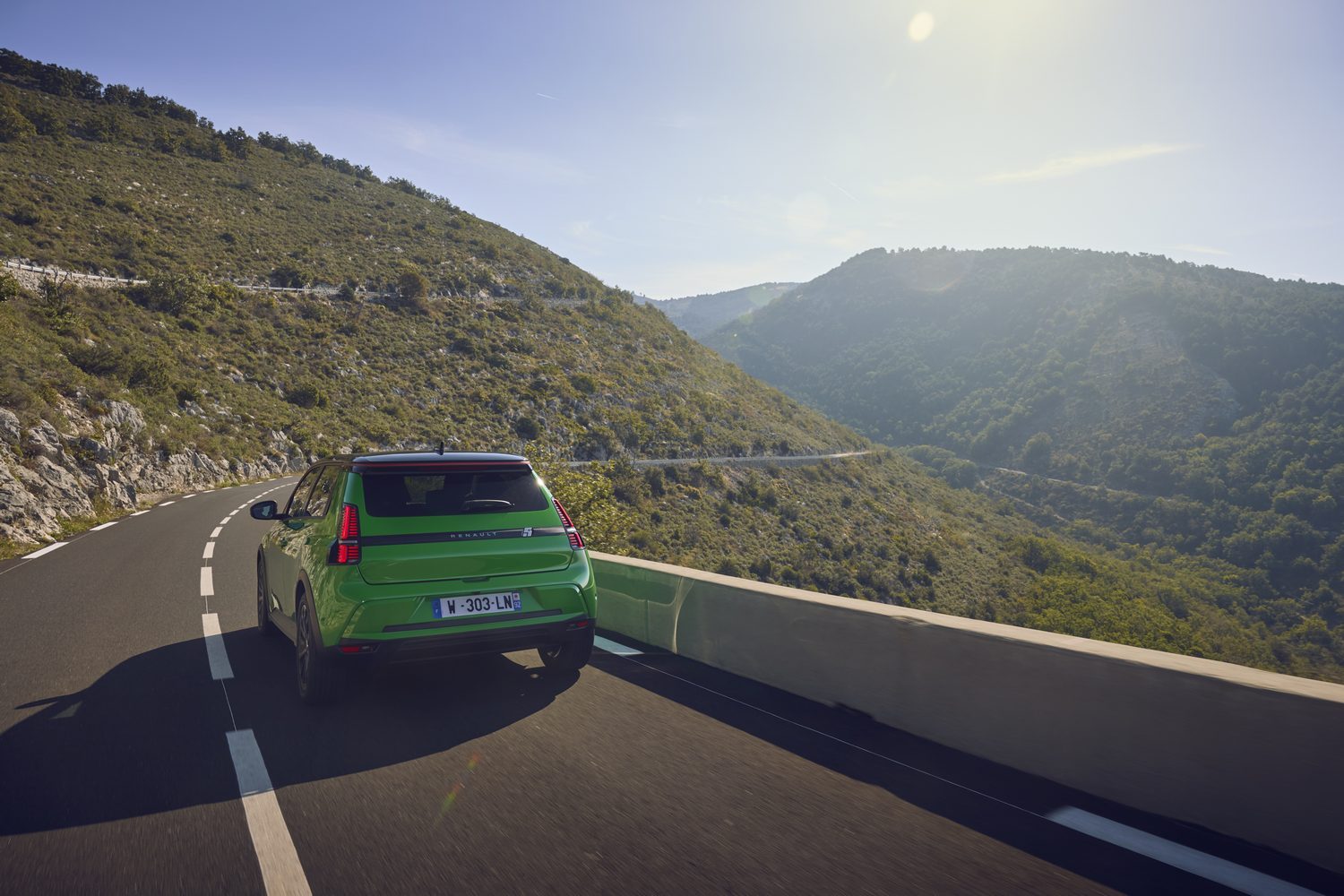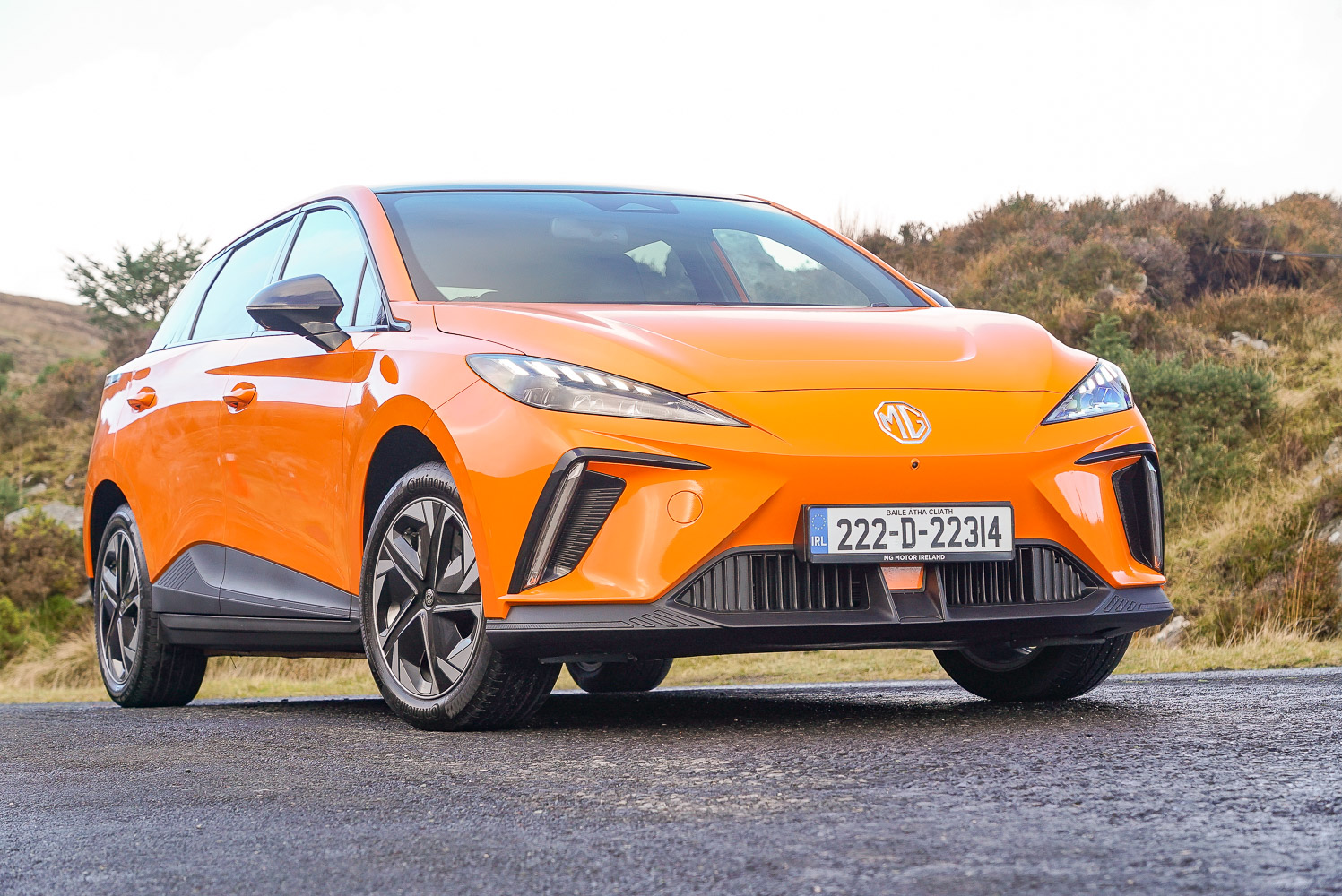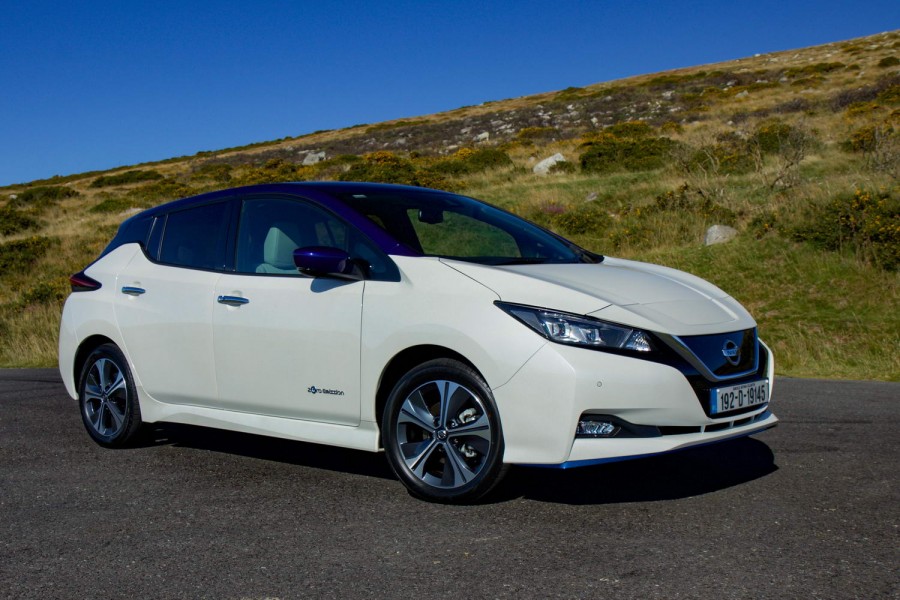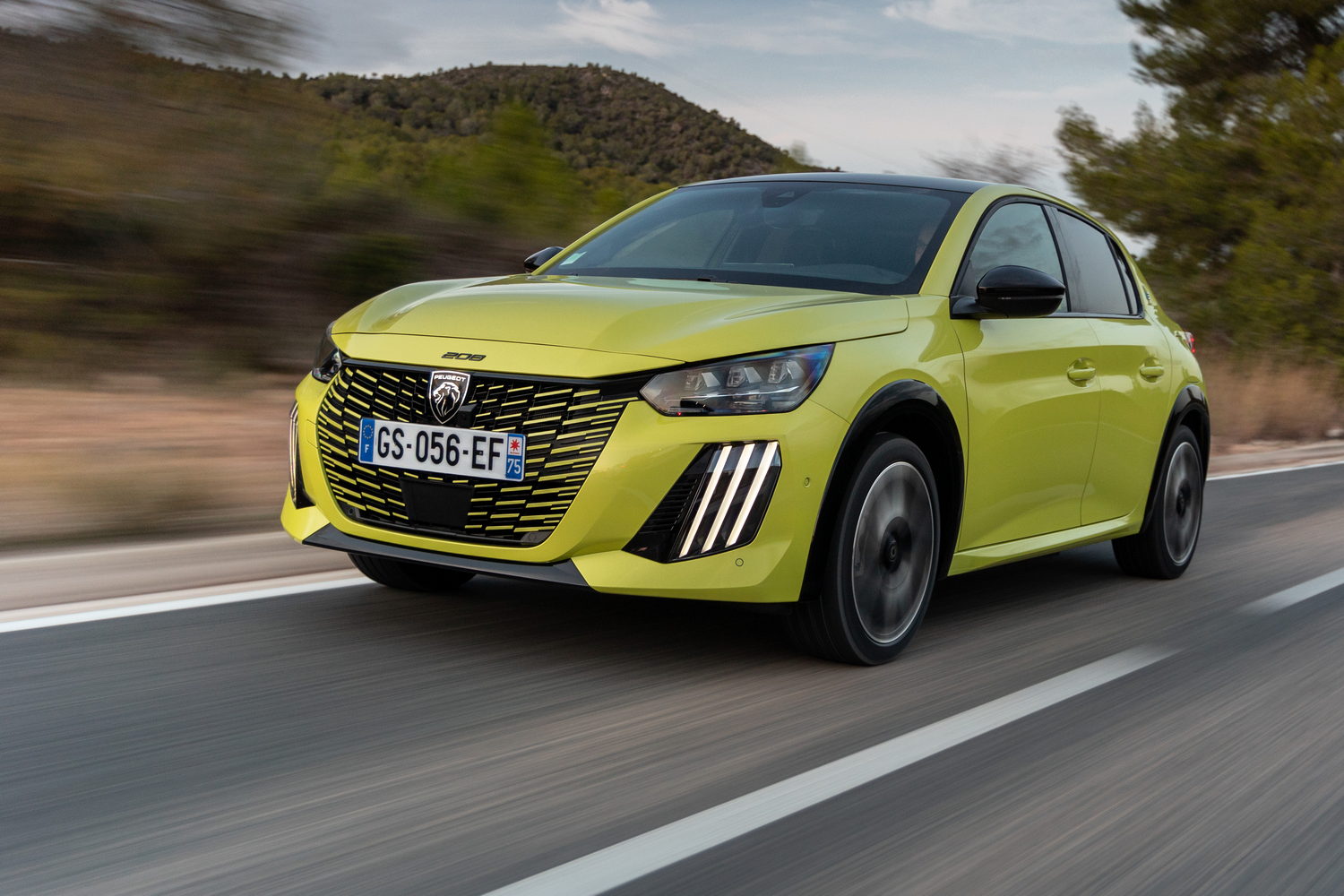When the covers came off the “Renault 5 prototype" back in 2021 the French company couldn’t possibly have predicted how well received the retro design would turn out to be. To make the most of the rapturous reception, it was decided early on that the production version had to stay as true as feasible to that show car. And back in February this year when the covers came off the showroom-bound version, we were extremely glad to see Renault had managed to retain the 5’s appeal, mixing buckets of retro cues with a modern stance and, of course, contemporary electric underpinnings.
If response to our social media posts from the Renault 5’s launch in France is anything to go by, interest in it hasn’t waned in the least, so now it’s finally time to get behind the wheel and see if it can live up to the promise of its exterior.
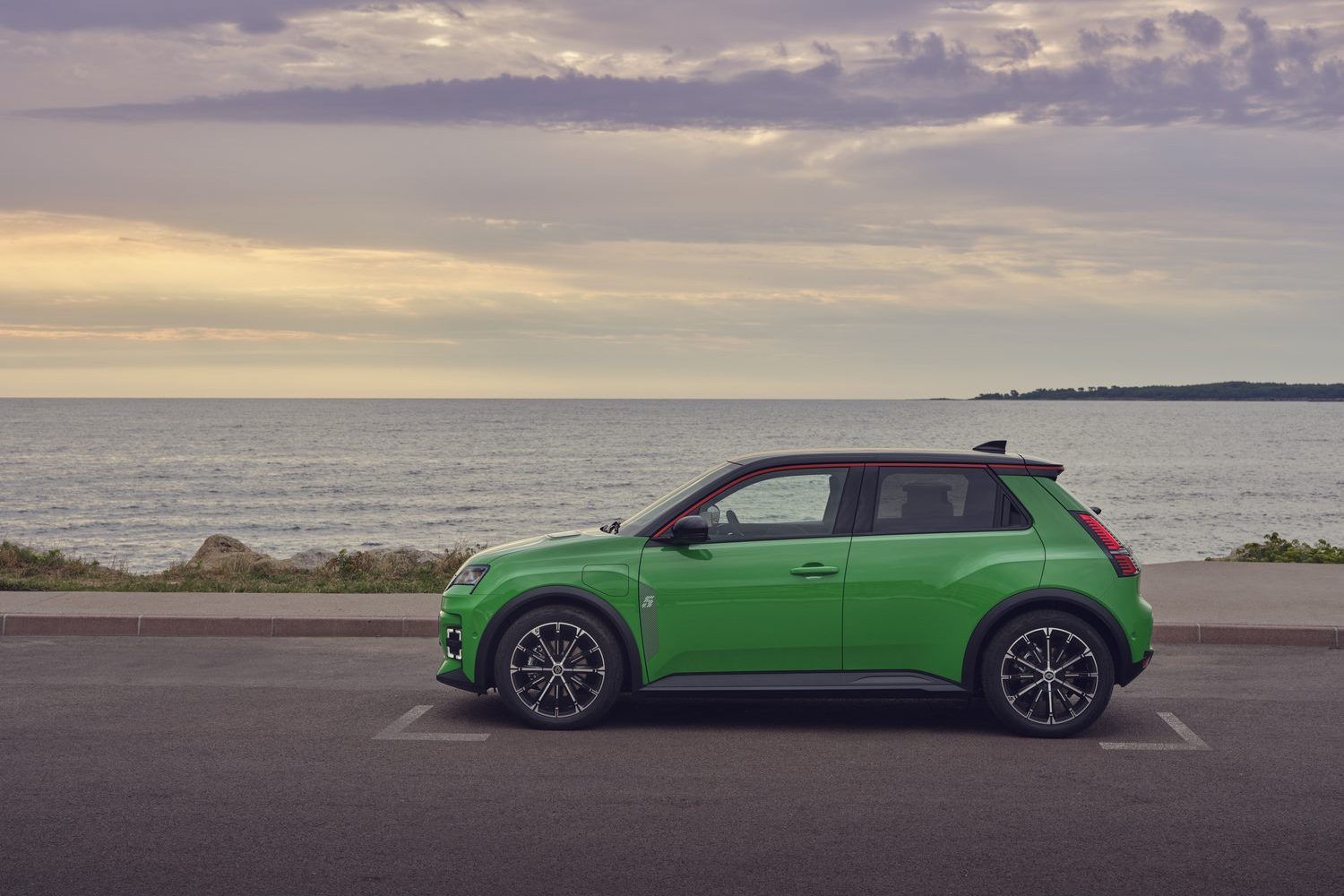
How much is the electric Renault 5 in Ireland?
Updated on 9 November 2024
It is now known that the R5 will start from just €25,995 including incentives, which is an incredible starting price. The top-spec car is a still-reasonable €32,995.
There should be three distinct trim levels to start with - probably called Evolution, Techno and Iconic - and the possibility for special editions each year, such as the Roland-Garros model unveiled at the Paris motor show recently. In terms of powertrains, a 150hp motor is paired with a 52kWh battery, as tested here, while a 120hp motor and 40kWh combination is the other option.
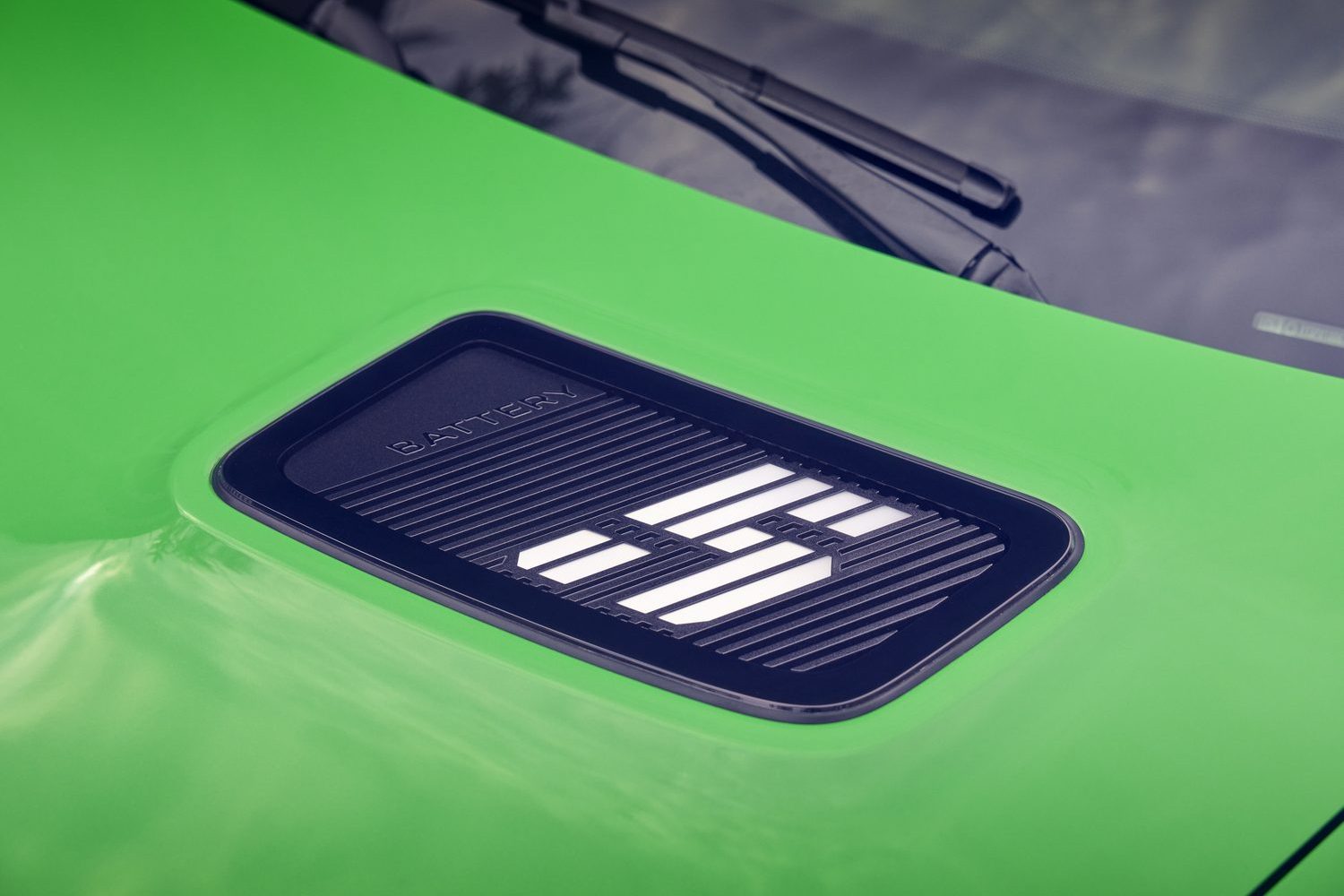
If you want more, then you’ll need to look to Alpine for its take on the R5. It’s called the A290, and we have high hopes that it will lead the Alpine brand’s launch on the Irish market before the end of 2025.
How close to the original R5 does the new one look?
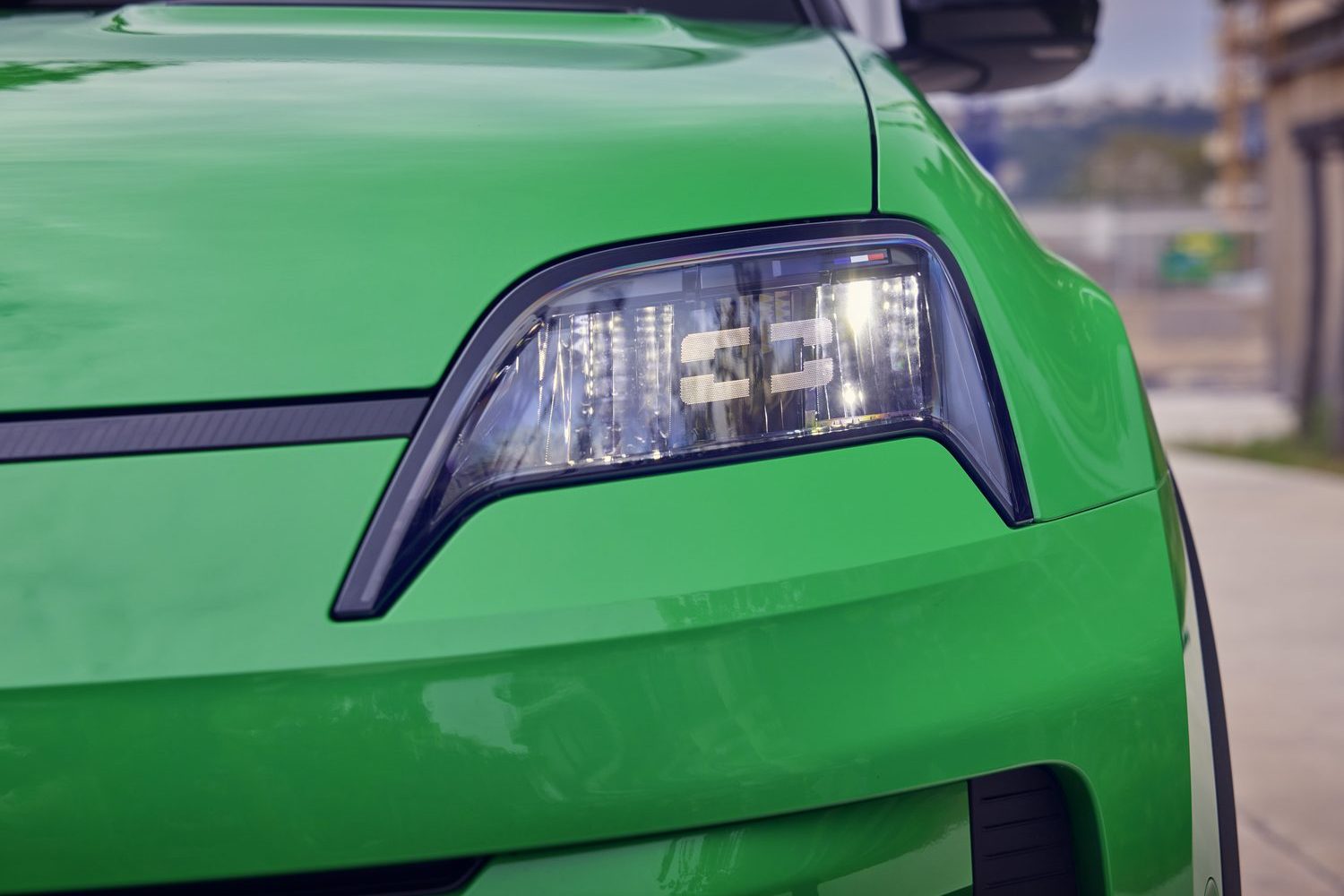
Our view may be biased by knowledge of the original Renault 5, launched in the 1970s, but we reckon that the new one is appealing even if you’ve never clapped eyes on its predecessor. The new car has a squat stance helped by its wide track and sub-four-metre length. Enhancing that are 18-inch wheels across the board - some with hub caps, most with alloy wheels.
The smart new LED headlights look vaguely like the square originals, though the new car gets a modern - and distinctive - lighting motif of its own, found within the main lights and also in the large fog lights below (it’s repeated on the air vents in the cabin as well). Those hark back to the driving lights of the original Renault 5 Turbo, and it’s that sporty model in particular that the designers have taken as inspiration for the new car. Hence the shape of the roofline and rear spoiler and a hint at muscular wheelarches front and back.
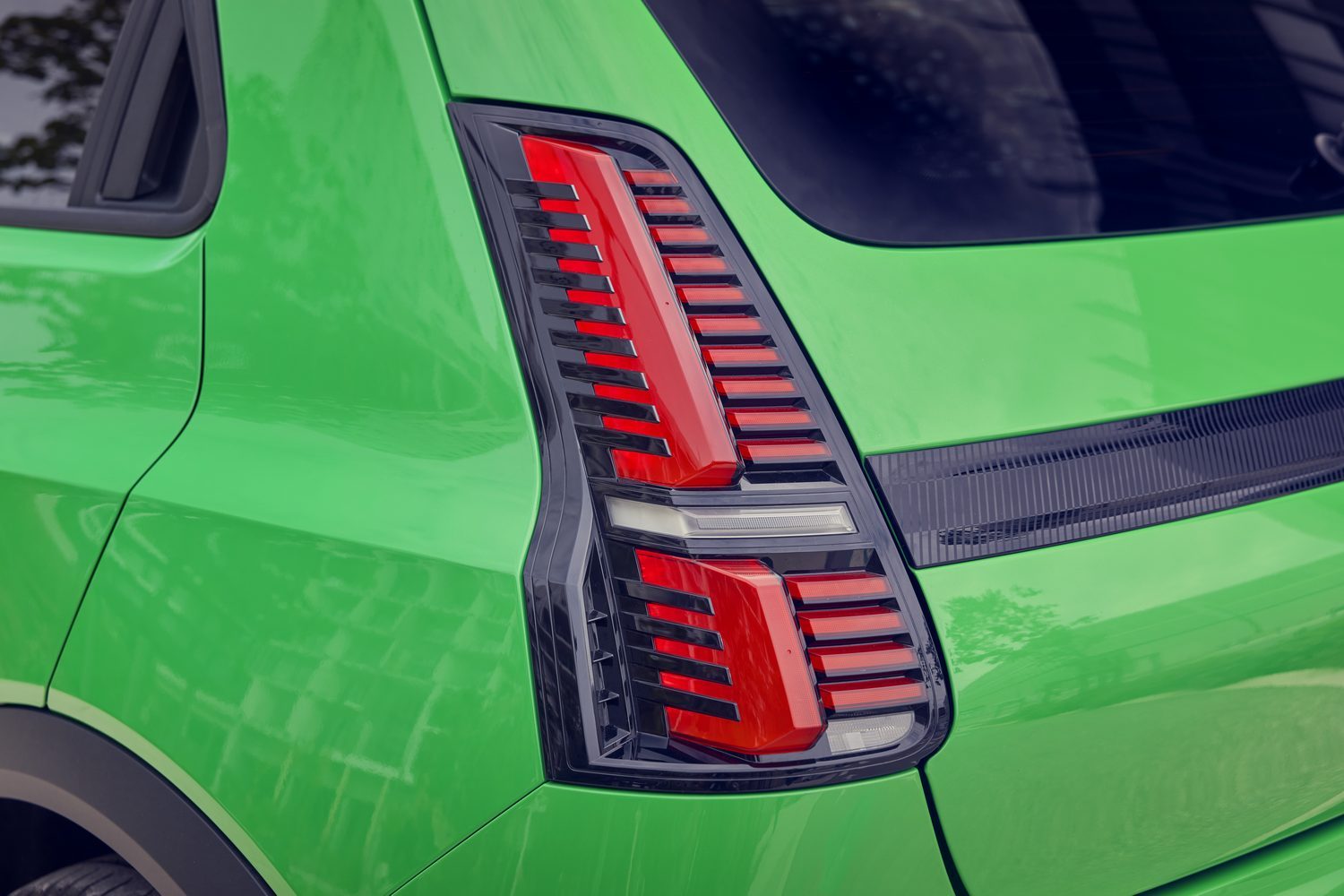
It's a bit of a gimmick, but in the location of the original’s bonnet vent is a stylised “5” acting as a charge level indicator in the new car. There are dinky little French tricolours in the headlights, too (and the car winks at you when you unlock it), while the slope of the tailgate and the overall appearance of the rear lights are clearly inspired by this car’s ancestor.
Somehow it all melds together into one appealing package that seems to garner universal approval. On our test drive through France, people from all walks of life either came to have a closer look, take a picture of the R5 or make a clearly positive gesture towards the car as we passed by.
The ‘Pop Green’ paint no doubt helped grab attention. Remarkably, it’s the free paint option for the R5, though we’d understand if people are tempted by the Pop Yellow alternative. Don’t worry, there are more conservative colours available, too.
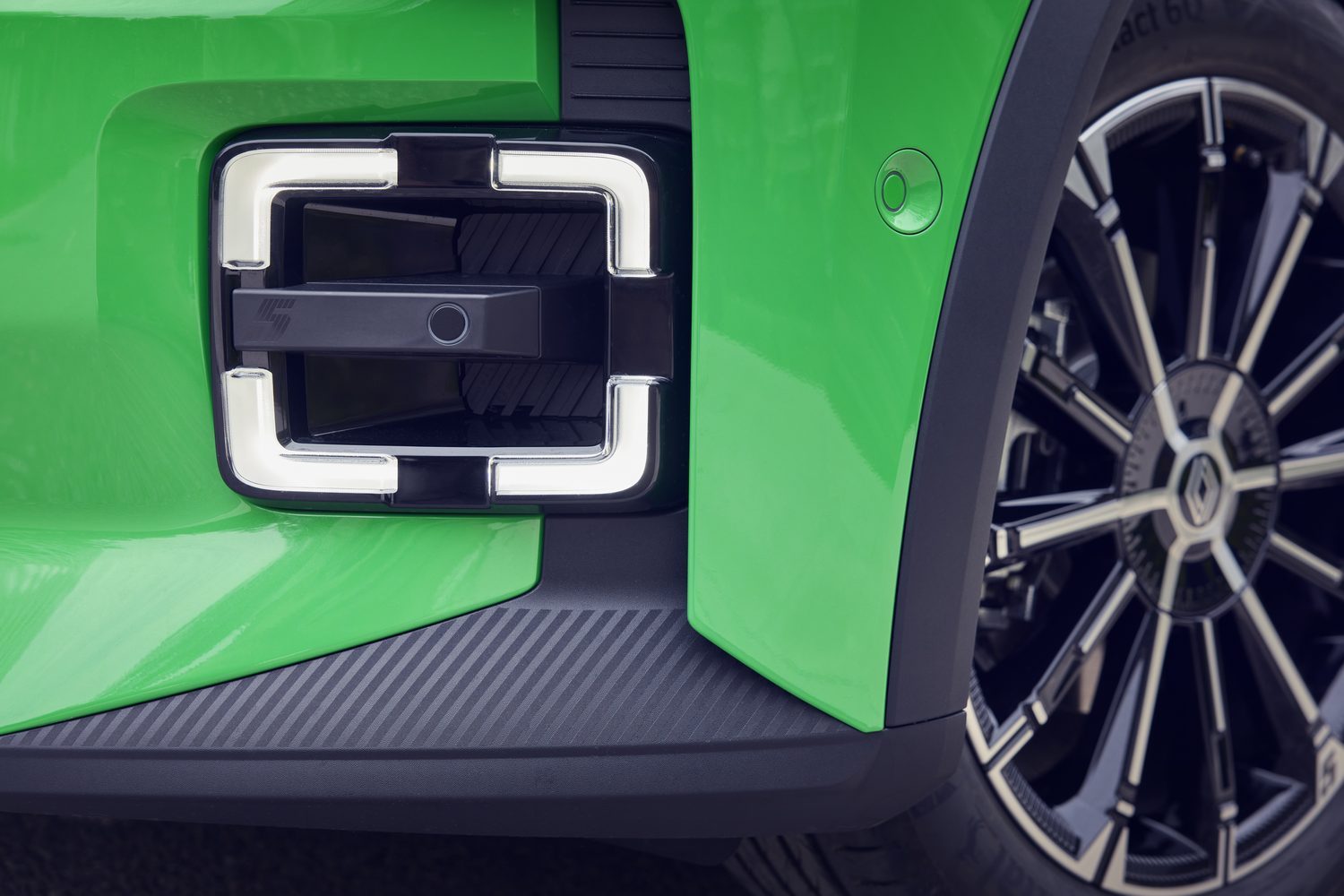
A look inside the electric Renault 5
The retro vibe isn’t quite so strong inside, though the fabulously supportive front seats do get the same distinctive H-shape as those in the original R5 Turbo. There’s also a padded dashboard ahead of the front-seat passenger and a cool, textured headlining.
But the rest is unashamedly modern. We’ll go into more detail on the tech in the section below but suffice to say there’s a digital dashboard and touchscreen in every model. Thankfully, the air conditioning, etc. is controlled by a separate bank of physical switches, as in most Renaults. The space to the right of the steering wheel is a little busy, though, as there are individual stalks for the wipers, sound system and drive. The steering wheel itself, a kind of squashed circle, is straight out of the Renault Megane E-Tech Electric and feels great to hold.
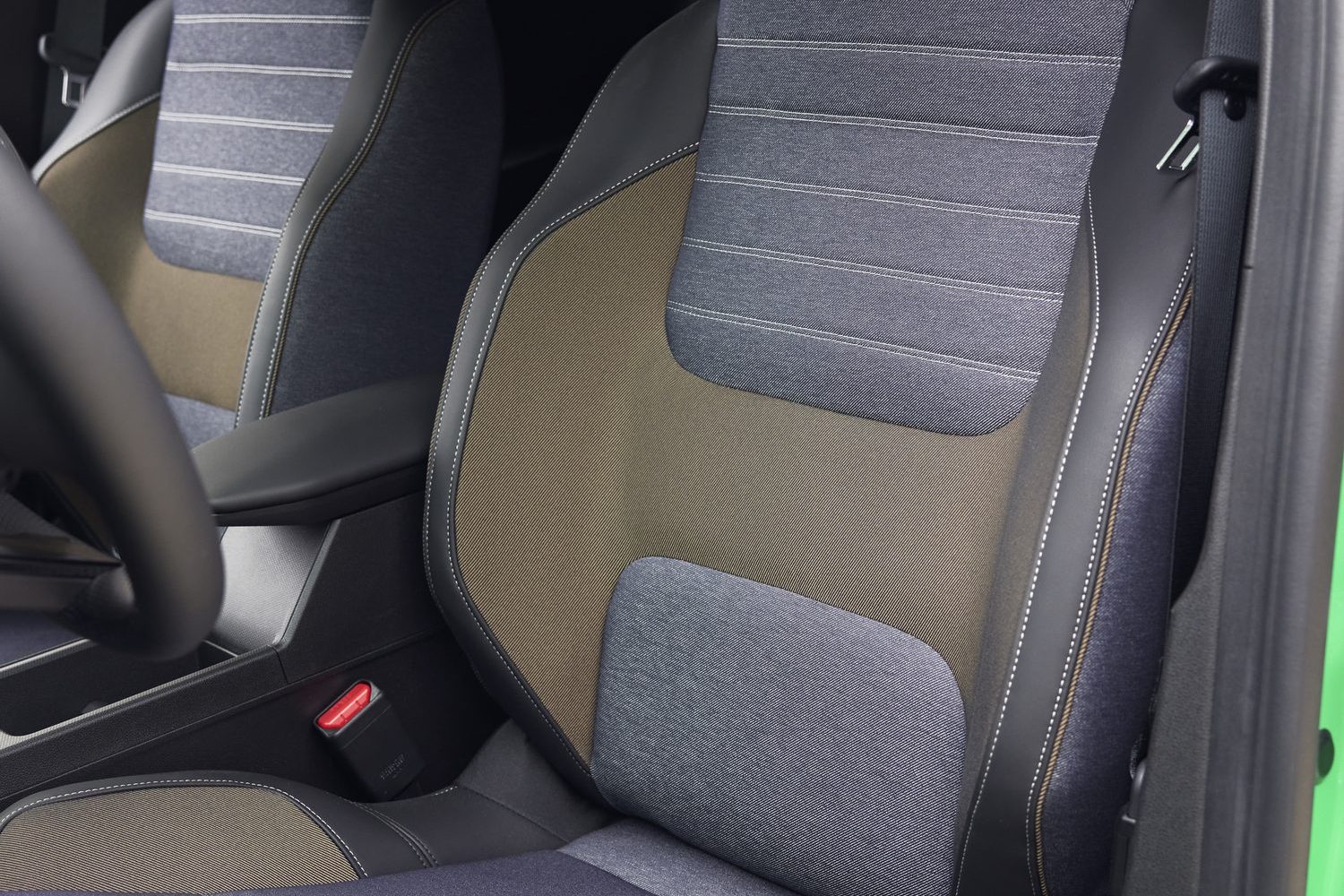
That and the driver’s seat come with loads of adjustment so there’s plenty of space up front. The cost of that is perhaps a slender centre console with only a modest amount of storage, but we need to remind ourselves that this is a car in the sector below the Renault Clio, not a large family vehicle. At least it all feels well made.
At a glance you may not notice the exterior door handles for access to the back seats, which is a clever styling trick, but to make the R5 a three-door car would have been to really limit its appeal. Sure, the rear seats have limited kneeroom, but not when considered alongside other cars of the same size. Shame there are no charging ports or air vents back there, but at least the floor is flat all the way across.
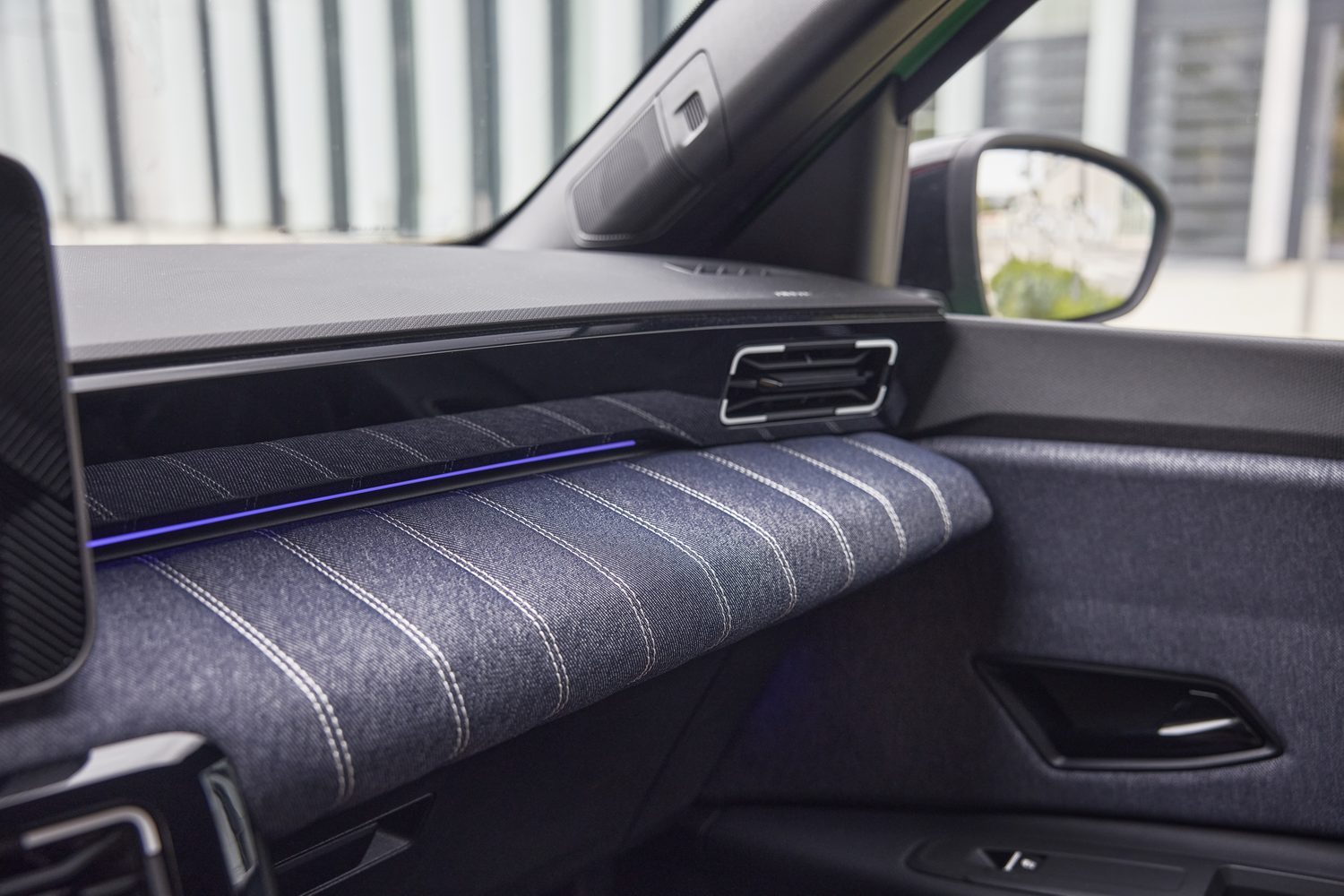
Those rear seats split and fold in a 60:40 ratio in case you need to carry bulky or longer loads that can’t fit in the boot. It holds up to 326 litres otherwise, including a useful underfloor section that’ll easily swallow all the charging cables.
Oh, and on the subject of practicality, the R5 is rated to tow up to 500kg. Very few EVs of this size can do that.
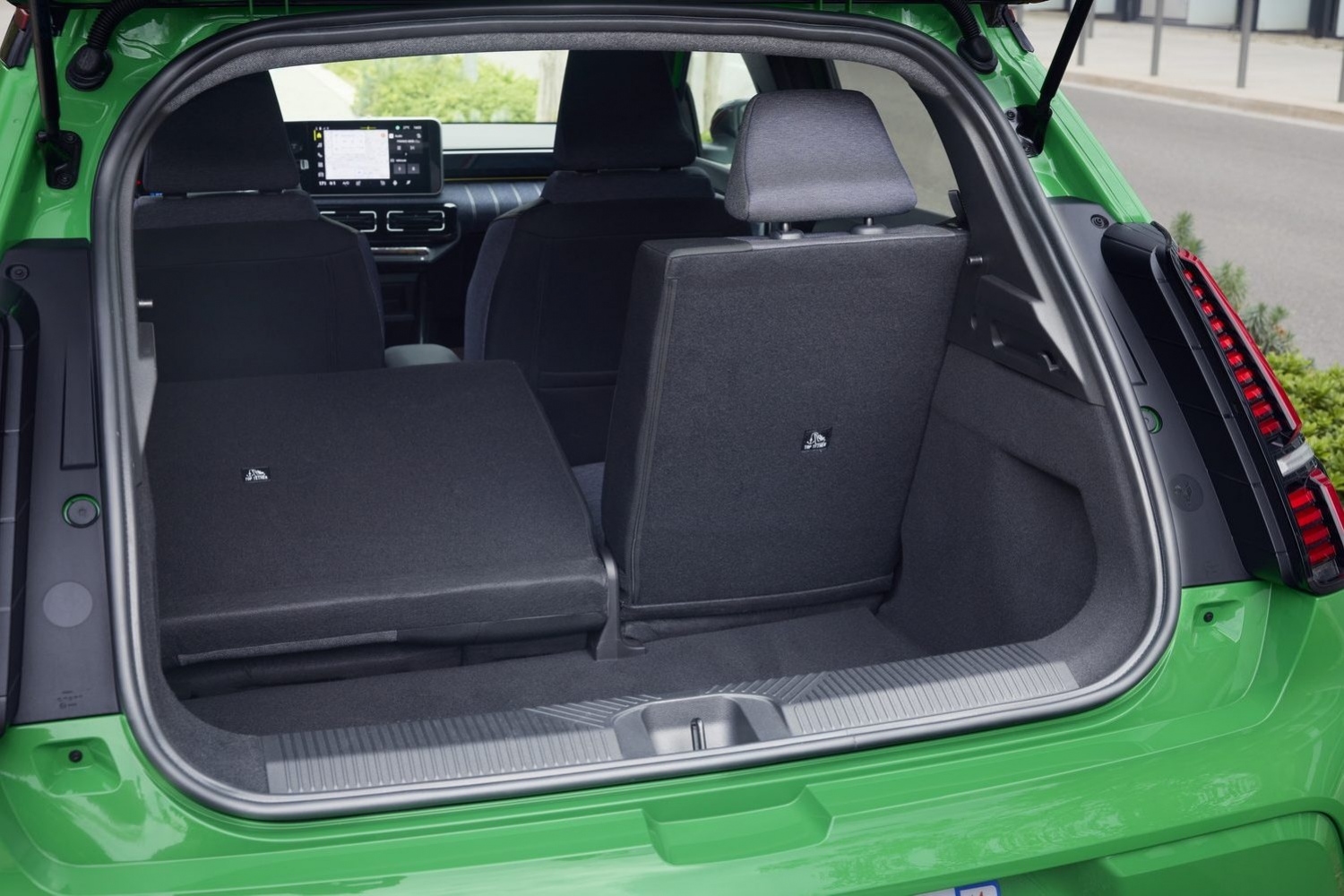
The electric Renault 5’s on-board technology
In front of the driver in all versions is digital instrumentation. This measures seven inches across the diagonal on entry-level cars or 10.1 inches as shown here, and the driver can select from five different views. It gets modern, crisp graphics and can display a wide range of information. Complementing that is a 10-inch touchscreen in the middle of the car.
It is powered by Renault’s ‘OpenR Link’ system with Google built in and works very well indeed. The Google integration means Google Maps, Google Assistant and up to 50 other apps available through the Google Play store. If you really want, you can of course still use wired or wireless Apple CarPlay and Android Auto.
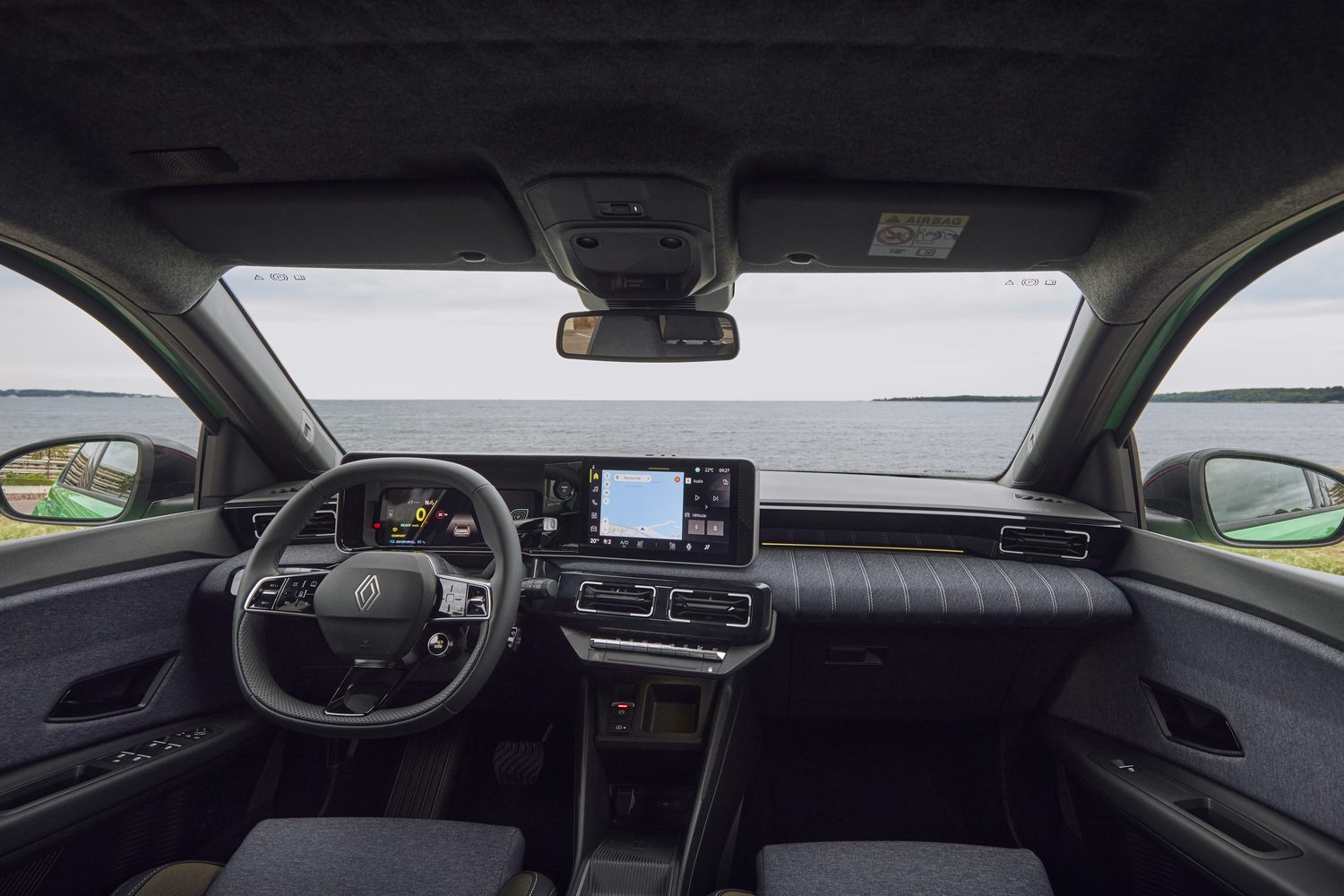
The Renault 5 is the first car from the company to feature its new ‘Reno’ avatar, billed as a virtual travelling companion, though one that knows the car inside out and can presumably speed up tasks that might otherwise take time to do. It can respond to driver input (it has ChatGPT capability for example) but also proactively makes suggestions, such as defogging the windows or switching to a more efficient driving setting. Reno will also be available in the Mr Renault smartphone app.
More tangible than that is the Renault 5’s V2L (Vehicle-to-Load) capability thanks to the bi-directional charger. Opt for a special adaptor that plugs into the charging port (behind the left-hand front wheel), and you can plug other electrical appliances into the car when in a remote location. The same technology enables the V2G (Vehicle-to-Grid) function to allow owners feed energy back into the electricity grid at times that make economic sense.
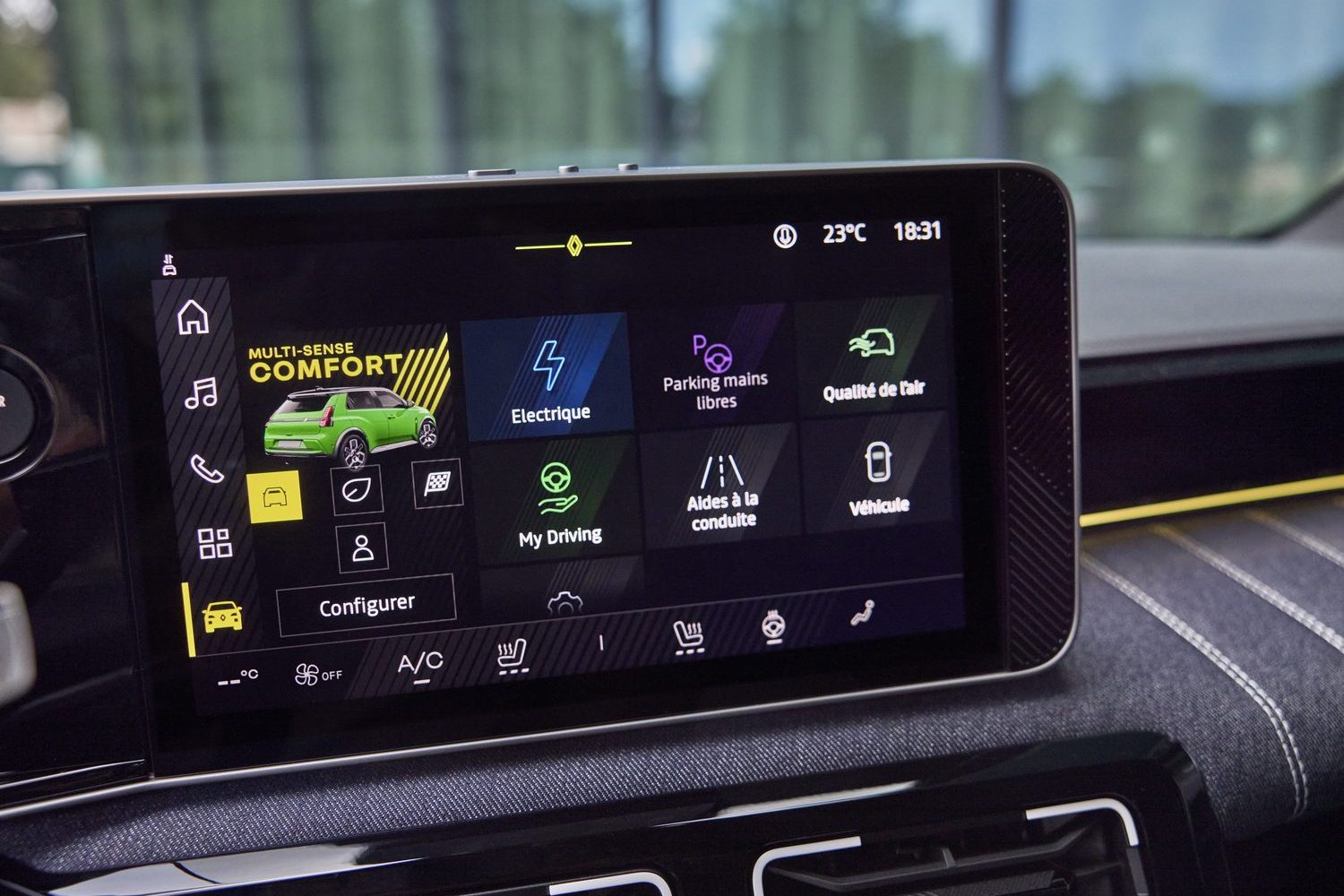
How many child seats can I fit in the electric Renault 5?
As is the norm in this size car, there are two ISOFIX mounting points in the back, with corresponding Top Tethers behind. There is not room to fit three child seats in the rear no matter how you look at it, and big, bulky rear-facing baby seats may cause a problem for tall parents up front as well. Shouldn’t be any issue fitting a large buggy or travel system into the boot, though.
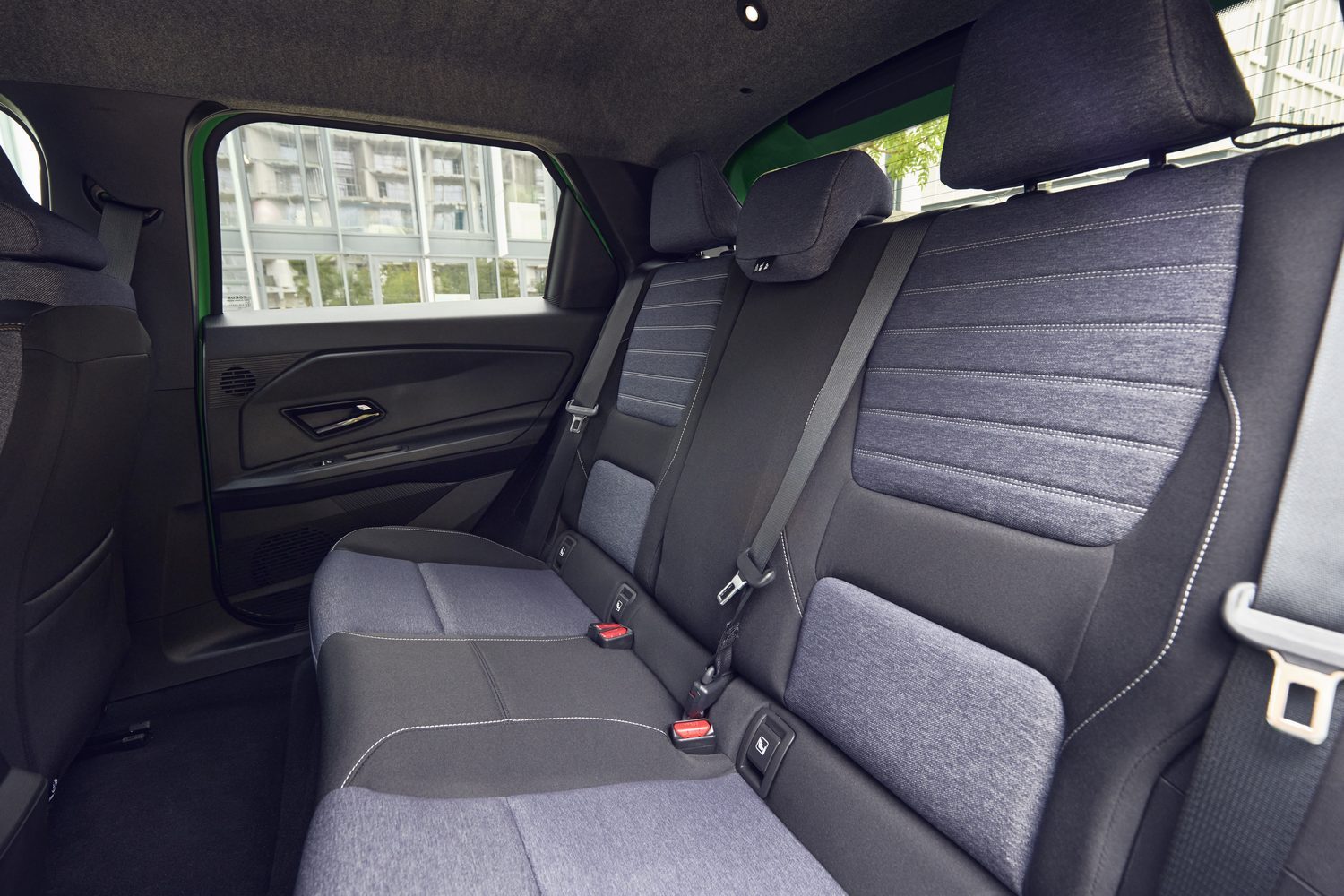
How safe is the electric Renault 5?
The Renault 5 has yet to be assessed by Euro NCAP, but we’d expect it to do well. There’s a wealth of advanced driving assistance systems (ADAS) fitted and we do like Renault’s approach to allowing its owners select their favourite settings and then group them together for quick access via the “My Safety Switch” button to side of the steering wheel.
Driving the electric Renault 5
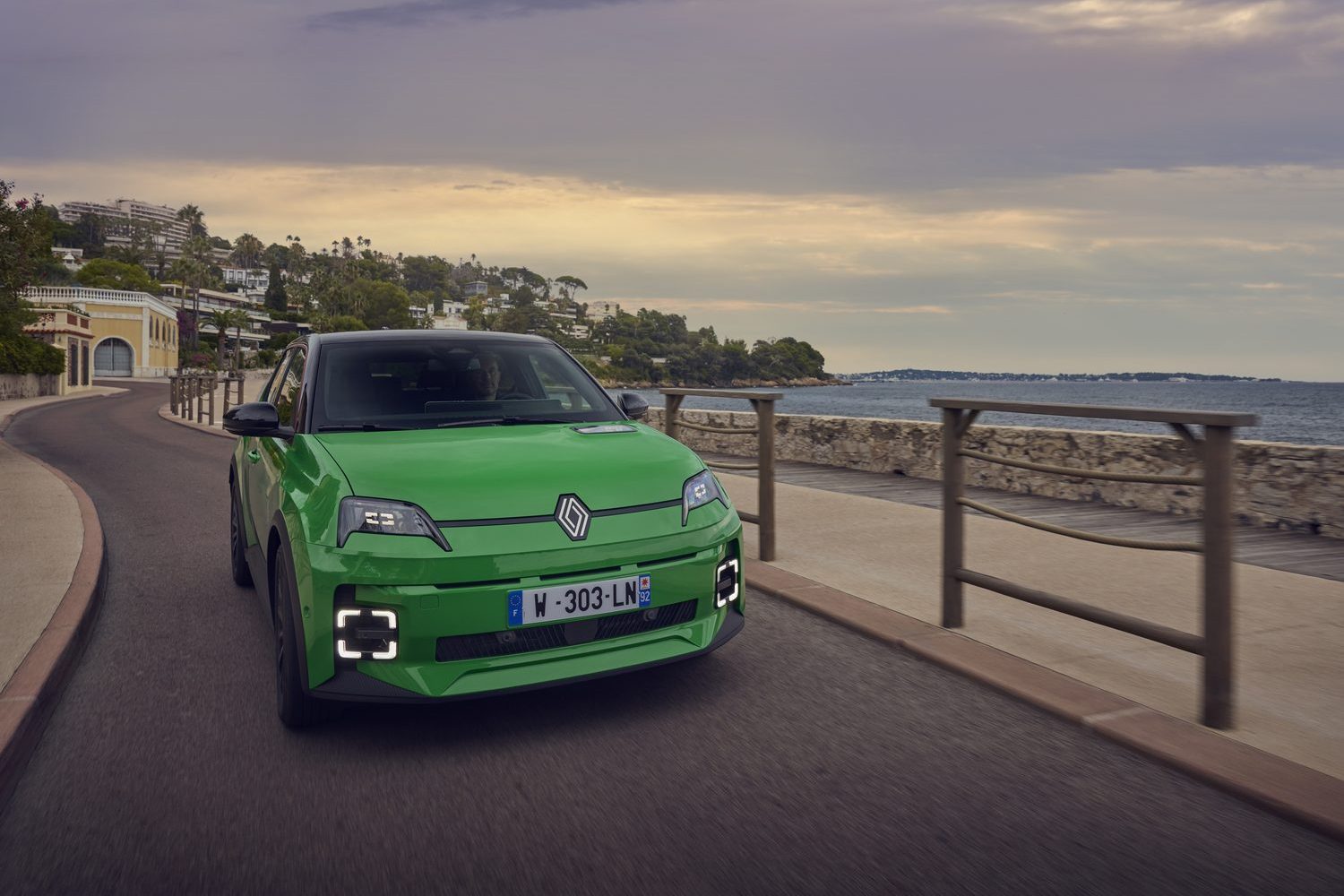
The R5 feels good from the first moment you pull the drive selector down to set off. The steering is direct and well-weighted, but never nervous, while response to the accelerator is brisk, but not snappy or difficult to modulate, so smooth driving, even in stop-start situations, is easy. That’s helped by perfectly calibrated brakes. Though they mix regenerative braking to charge up the battery (and you can choose an enhanced level of that using the ‘B’ driving setting) with friction braking when required, the pedal always feels consistent and confidence-inspiring. Visibility in all directions is good, too, easing the job of dicing with grumpy rush-hour traffic.
Leave the city behind and head out on the motorway and it’s clear that the relatively modest peak power of 150hp is perfectly adequate for this car. That’s partly because Renault has managed to keep the weight relatively trim (for an EV in any case) and partly due to the instant-torque nature of electric motors. The R5 just accrues speed when you need it to, for example joining a fast-flowing motorway.
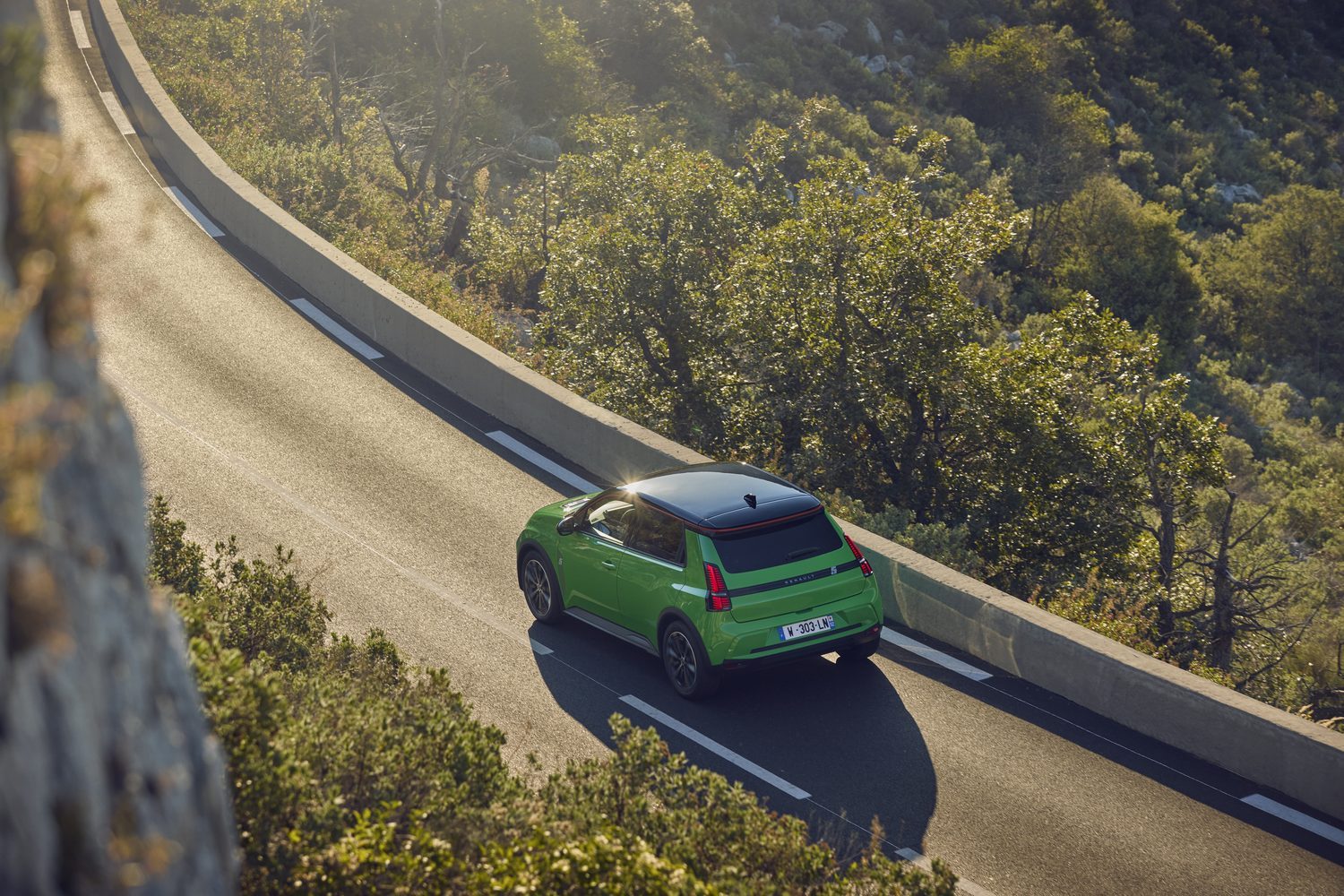
Remarkably, it proves to be more refined in this scenario than some supposedly more premium cars. The electric motor is barely audible, an acoustic windscreen helps keep wind roar at bay and there isn’t even much tyre noise over a variety of surfaces. The relaxation is added to by the suppleness of the suspension, gently moving with the road rather than fighting against it.
But you’ll miss out if you don’t take the scenic route every now and then, as Renault’s engineers have managed to combine real-world comfort and civility with a chassis that is great fun to drive. There’s almost no reason to change from the default Comfort setting to the slightly more responsive Sport mode, as it only alters the power steering and accelerator pedal calibration. Find a suitably twisting road and you’ll soon be stringing corners together with a big smile on your face. The body control is excellent, and the well-judged brakes and steering make the R5 a joy to drive.
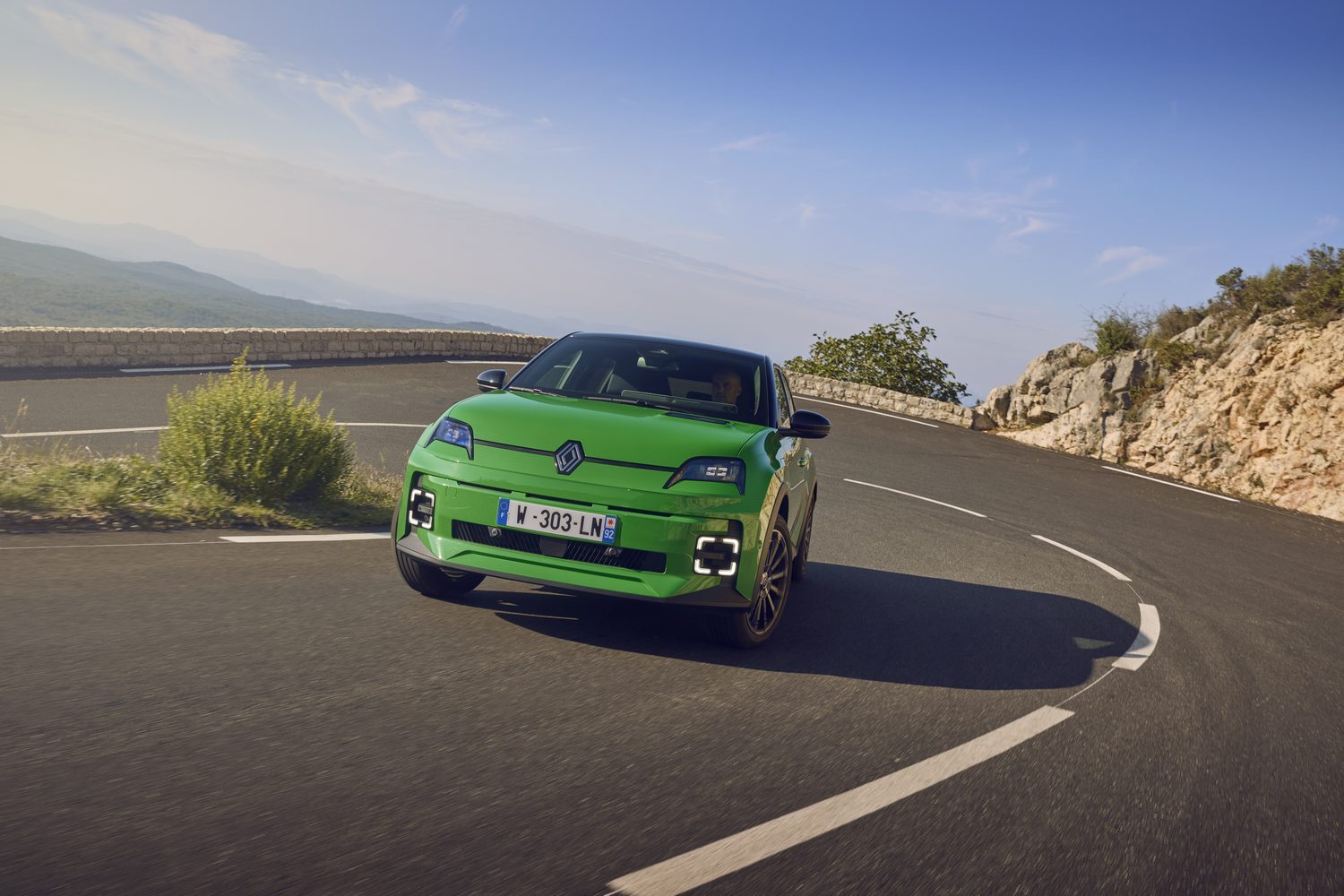
About the only minor blot on an otherwise immaculate copybook is the ease at which the electric motor can spin a front wheel up without notice. This only really happens on slippery surfaces or on exiting tight junctions in a hurry, in truth, and the traction control system soon catches up.
What’s the electric range of the electric Renault 5?
The entry-level version of the R5, using a 40kWh battery, will get an official range of about 310 kilometres, while the larger battery pack tested here can hit 410km on the WLTP cycle. To do that, it must average energy consumption of no more than 14.9kWh/100km and, encouragingly, our test car managed 16kWh/100km over a day of very mixed driving, though admittedly in warm conditions. Nonetheless, a heat pump will help maintain that in the winter so we’d suggest that almost anyone should manage 350km from a charge in real-world use of this car.

All cars get 11kW AC charging and the peak DC-charging rate varies depending on which battery is fitted. The larger one can recharge at 100kW, the smaller at 80kW.
The reasons you’d buy an electric Renault 5
Honestly, the Renault 5 has so much going for it that we suspect it would be a success no matter how averagely it drove. It looks fabulous outside and in, is well-specified, has an efficient electric system and did I mention how good it looks? But Renault didn’t stop there, as the R5 also drives with real aplomb, managing to be engaging and fun in the corners if you’re in the mood, but also just quiet, refined and comfortable the rest of the time. On top of all that, the keen Irish pricing gives it a chance to be as successful as it deserves to be, as this is one of the best EVs launched yet.
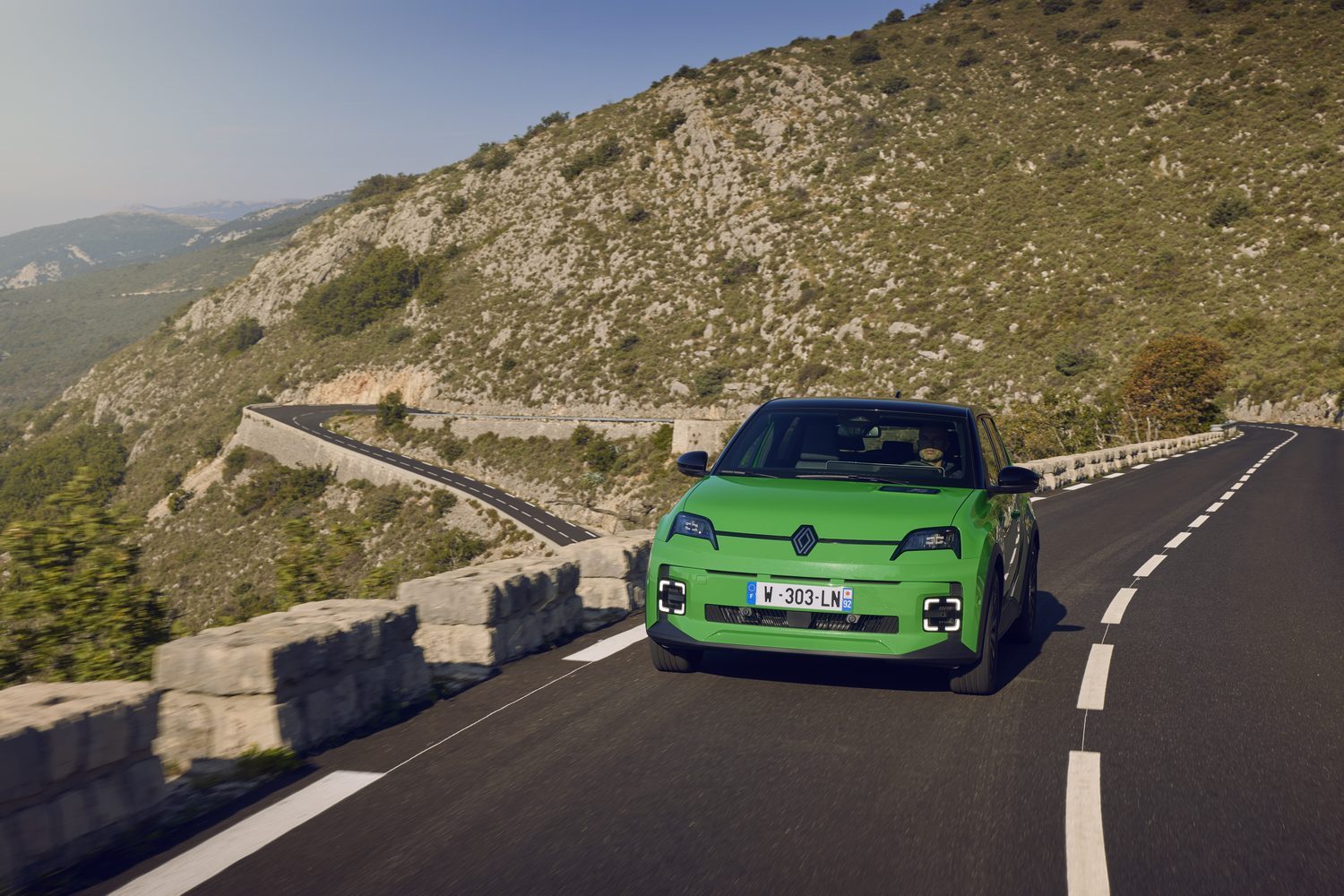
Ask us anything about the electric Renault 5
If there’s anything about the electric Renault 5 we’ve not covered, or you’d like advice in choosing between it and other cars, you can avail of our (completely free) expert advice service via the Ask Us Anything page.

